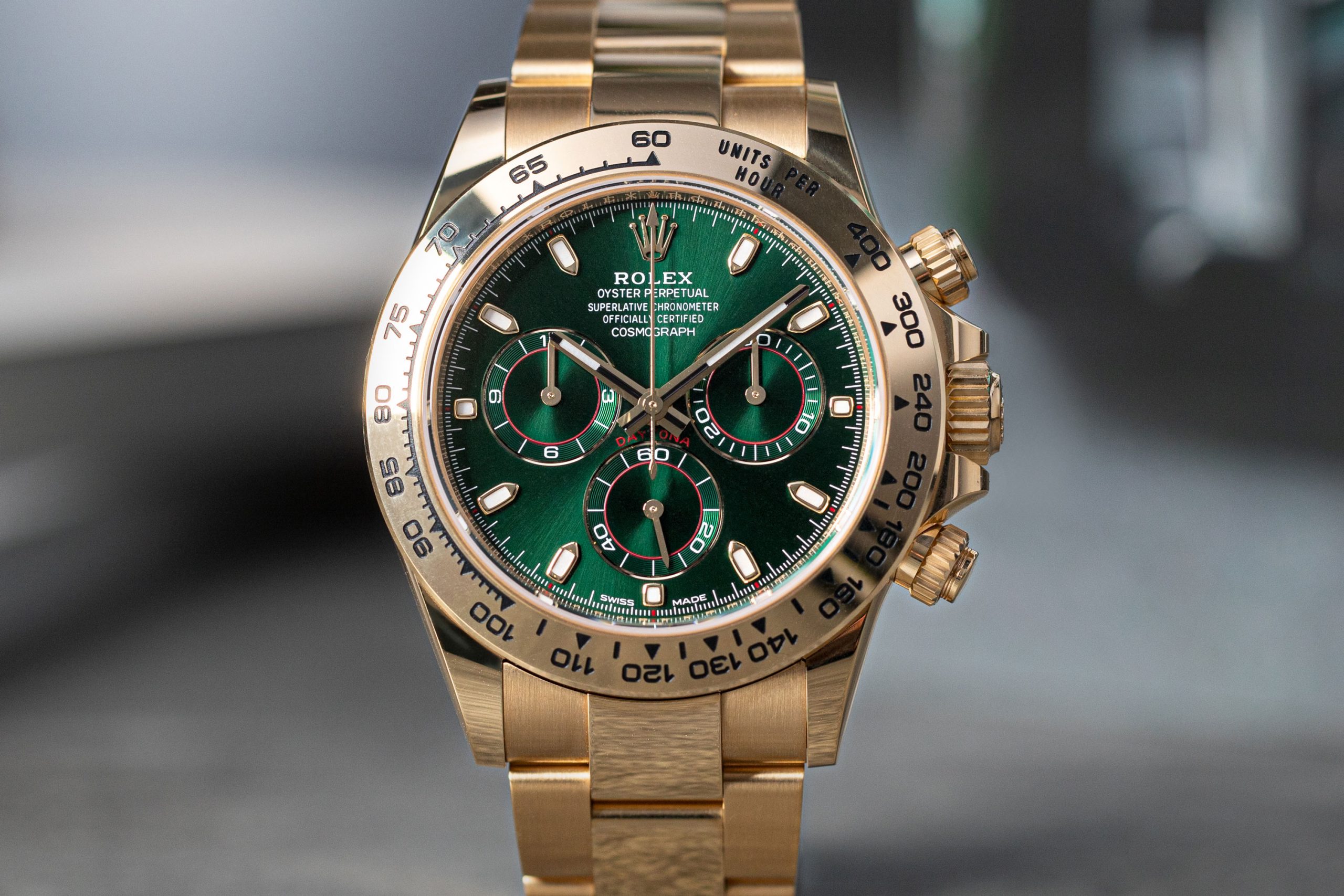Rolex
The One: The Rolex Daytona Reference 116508 in gold with a green dial
It’s maybe a little embarrassing to admit, but until a few months ago, despite being a dyed-in-the-wool, true-believing, card-carrying, self-avowed watch nerd, I had never owned what is possibly horology’s most mythical reference, THE timepiece that almost every watch enthusiast aspires to own. The watch that is seared indelibly into our minds and imprinted permanently onto our consciousness so that thoughts of it are inescapable. The watch that, back in the late 1980s, gave birth to the sports chronograph craze and was THE very watch to engender that controversial phenomenon known as the waiting list. The Rolex Daytona.
The Rolex Daytona is a safe investment
Since its modern automatic winding version the 16500 was created in 1988, there has never been a day that the Rolex Daytona hasn’t traded for a massive premium on the secondary market, so much has global desire outstripped production of the watch. That’s a full 34 years where, for every one watch created, there has been at minimum 100 people that have wanted to buy it. In this regard, it is singular and utterly unique. Sorry, Generation Zer! But the truth is until about five years ago, you could walk into any authorized retailer and buy a Patek 5711 or Audemars Piguet 15202 or any François-Paul Journe on the spot, though that time is clearly gone for good.
Rolex Daytona: vintage or modern
OK, wait a second. Let me qualify that first statement. Yes, I owned some vintage Daytonas. But until recently, I had no idea what it was like to live with and wear on a daily basis a modern caliber 4130 Rolex Daytona. And I can tell you with absolute certainty this experience so far exceeds owning the vintage watches and pretty much any other sports chrono on the planet that I wouldn’t even place them in the same category. It would be like comparing the latest hybrid Ferrari SF90 Stradale with an Amish horse and carriage, if that carriage had two creaky wheels and was pulled by a donkey instead of a horse.
OK, maybe not that extreme but honestly, it’s not that far off. It wasn’t until I received ownership of one of my personal grail watches — the yellow gold, green sunray dial work of horological magnificence known as the reference 116508 — that I understood how a modern Daytona is that extraordinary combination of heart-stopping, almost constant palpitation-inducing beauty with ease of use and reliability that are without equal.
It would be as if the most beautiful creature on the planet, my dachshund Bandit, could wake up in the morning and make me perfect eggs benedict topped with homemade hollandaise and Caspian Sea beluga caviar, correctly light my Hoyo de Monterrey Epicure No. 2 without excessively charring its delicate wrapper, before chauffeuring me to work in my naturally aspirated AMG C63, such is my Daytona’s inimitable combination of aesthetic magnificence combined with infallible work ethic and reliability.
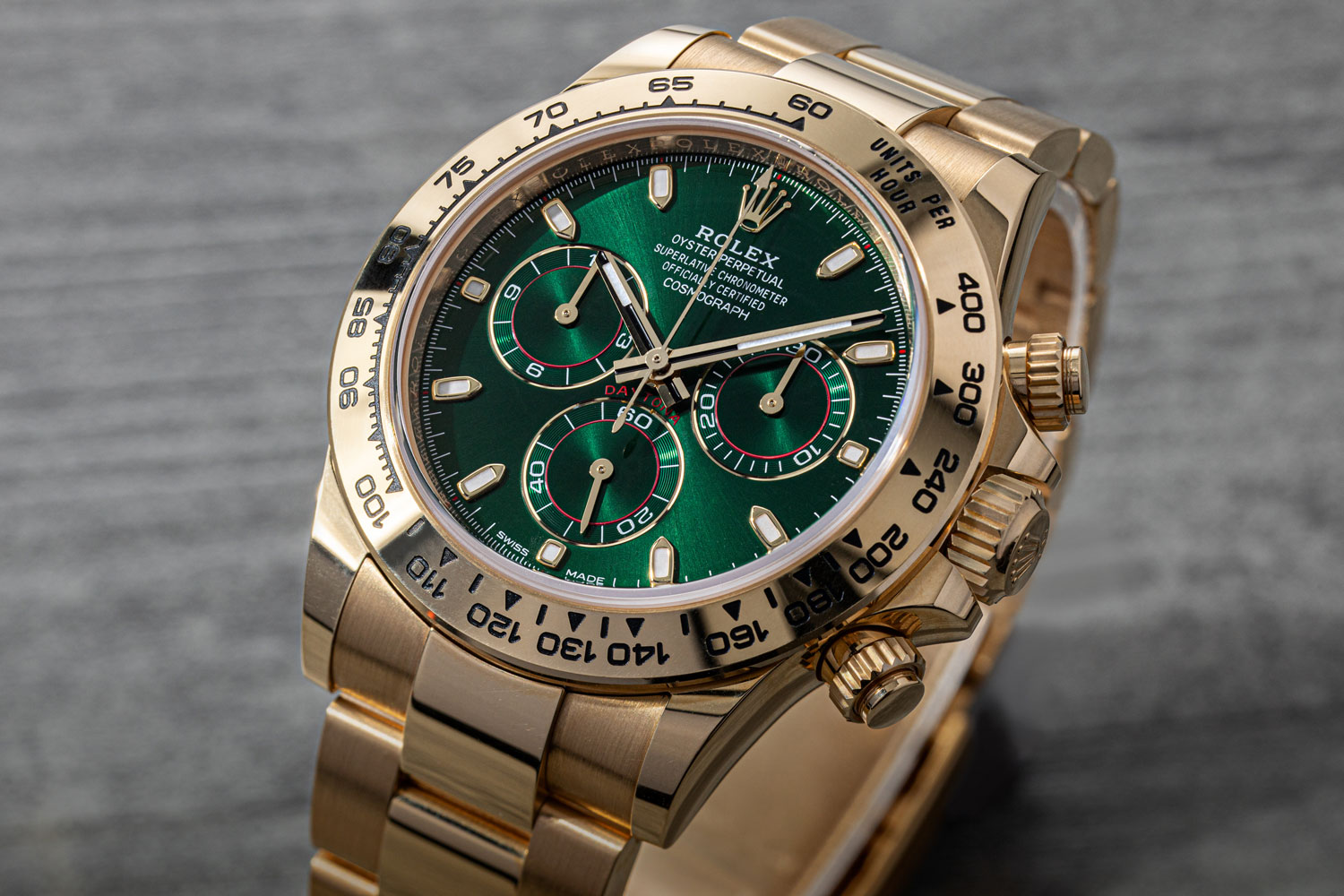
A magnificent chunk of yellow gold goodness - The Rolex Daytona 116508 (Image: Revolution©)
The Daytona is the mother of the modern sports chronograph
Recently, while in conversation with British editor for Revolution and all-around Rolex expert Ross Povey, he put forward two interesting points. “In my opinion, the 16520 launched in 1988 created the aesthetic blueprint for the modern sports chronograph. People often talk about Gérald Genta being a design genius based on the longevity and enduring relevance of his work. And, of course, I agree. But I also think that anonymous person working for Rolex who designed the modern Daytona is just as much of a design genius, if you look at the impact, influence and longevity of this icon of all icons,” he said.
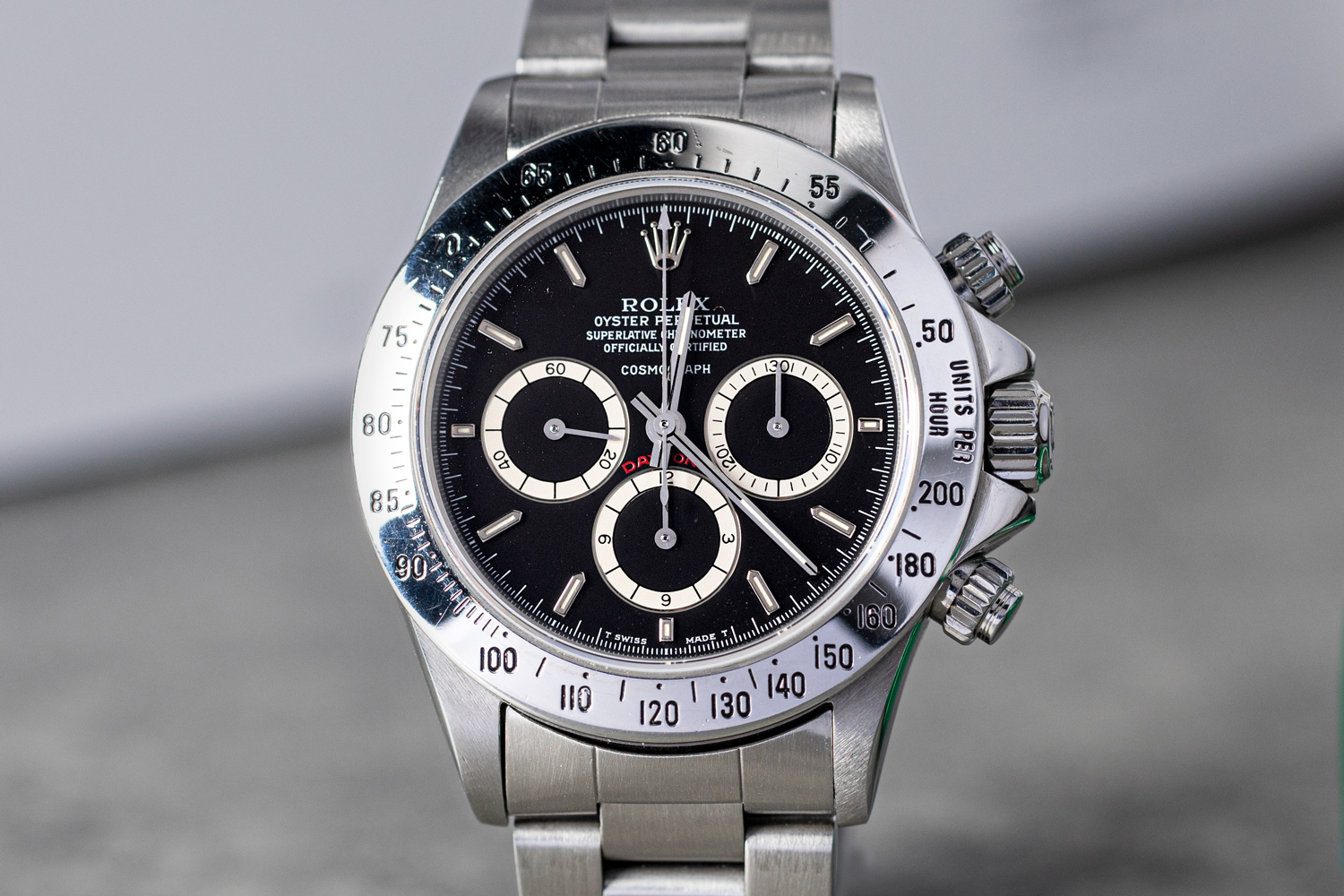
The Rolex Daytona 16520 was produced from 1988 to 2000 with various subtle nuances in its dial design, throughout its production run. The author’s 16520 is an R-series with floating “Cosmograph” and inverted “6” in the chronograph hour subdial, that looks like a “9” instead. Very, very rare… (Image: Revolution©)
Ross is absolutely right. Firstly, because the modern 116500 — the world’s most desired and lusted-over sports chrono — is a barely changed evolution of this original design. Secondly, because every other automatic sports chronograph in this category has been in some ways influenced by a Daytona. The other point which Ross made, when his sharp eye caught a glimpse of the yellow gold and green glory of the 116508 on my wrist during a Zoom call, was this. He said, “Now, that’s an incredible watch.” Then thinking for a moment, he continued, “You know, with your 6241 ‘Paul Newman,’ 6265 18K yellow gold, R-series 16520 and this new 116508, you’ve got a perfect four-watch Daytona collection.” And that was a moment of revelation for me.
Rolex Daytona 6241: ultimate reliability?
Honestly, even though I loved the vintage watches, I had grown slightly disenchanted with them, especially the 6241, which was not water resistant. With these old watches, you are always living in a state of heightened anxiety: What if the lume plots fall off? What if they need a service and someone scratches the irreplaceable dial? What if the over 50 year-old bracelet’s spring bar pops off?
I was once at a restaurant in London when I realized the pusher for the 6241 had fallen off, causing me to spend an hour on my hands and knees searching in vain for it. I once wore the 6265 to spin class — yes, I realize how stupid that is now — and when I walked out, I realized that its crystal was misted up, causing me to panic.
It is kind of like my ownership of my vintage motorcycles, a 1967 Triumph TR6C, a 1972 Norton Commando and a 1977 Harley XLCR. They are charming as hell to behold. Their carbureted engines even smell nostalgically cool, like the aroma of Steve McQueen’s trousers after he’s been riding in the desert. But each time you throw a leg over one of them, you are already planning to not arrive at your destination.
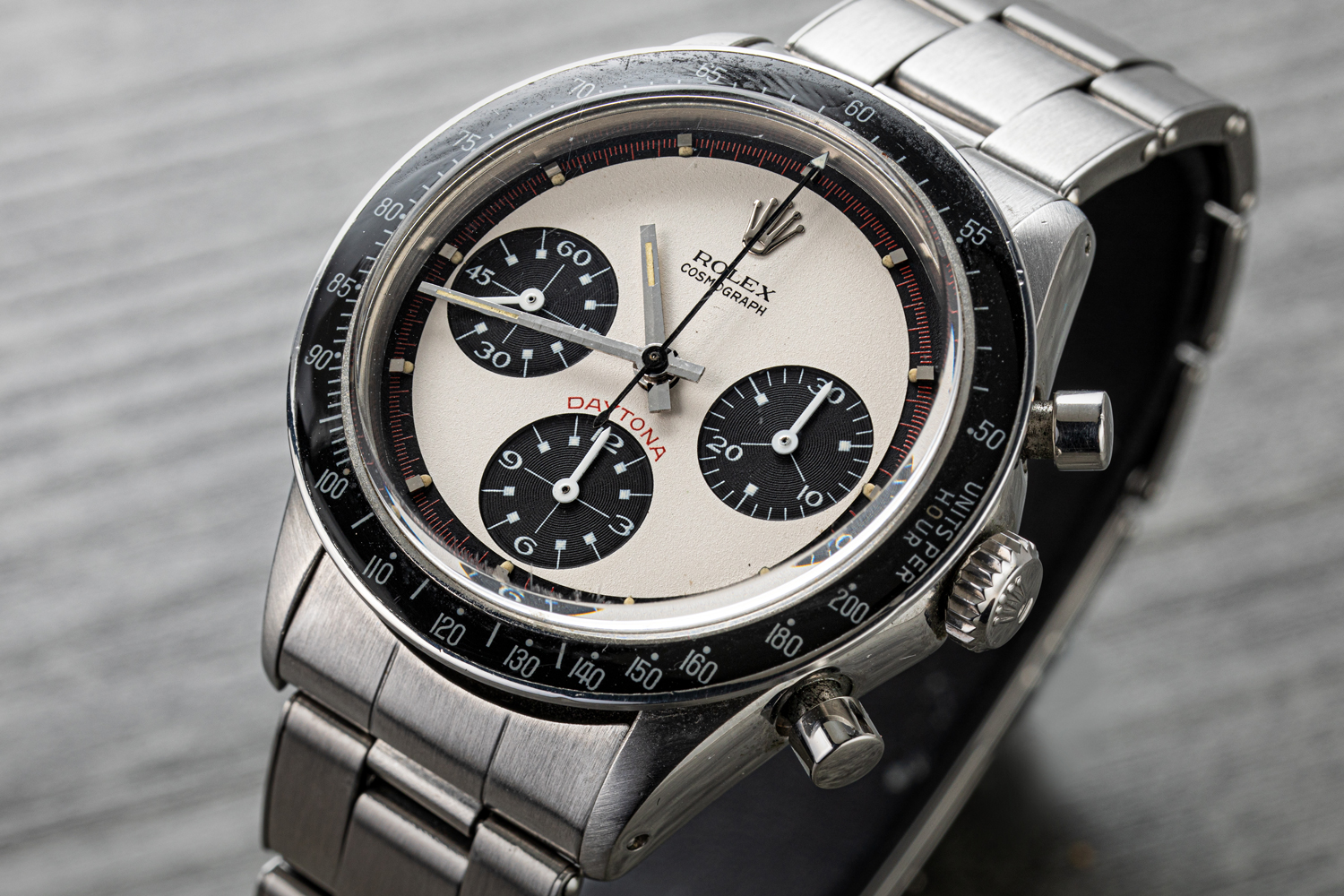
The author’s 6241 with a rare “Paul Newman” dial. The once missing pusher is safely back where it belongs. (Image: Revolution©)
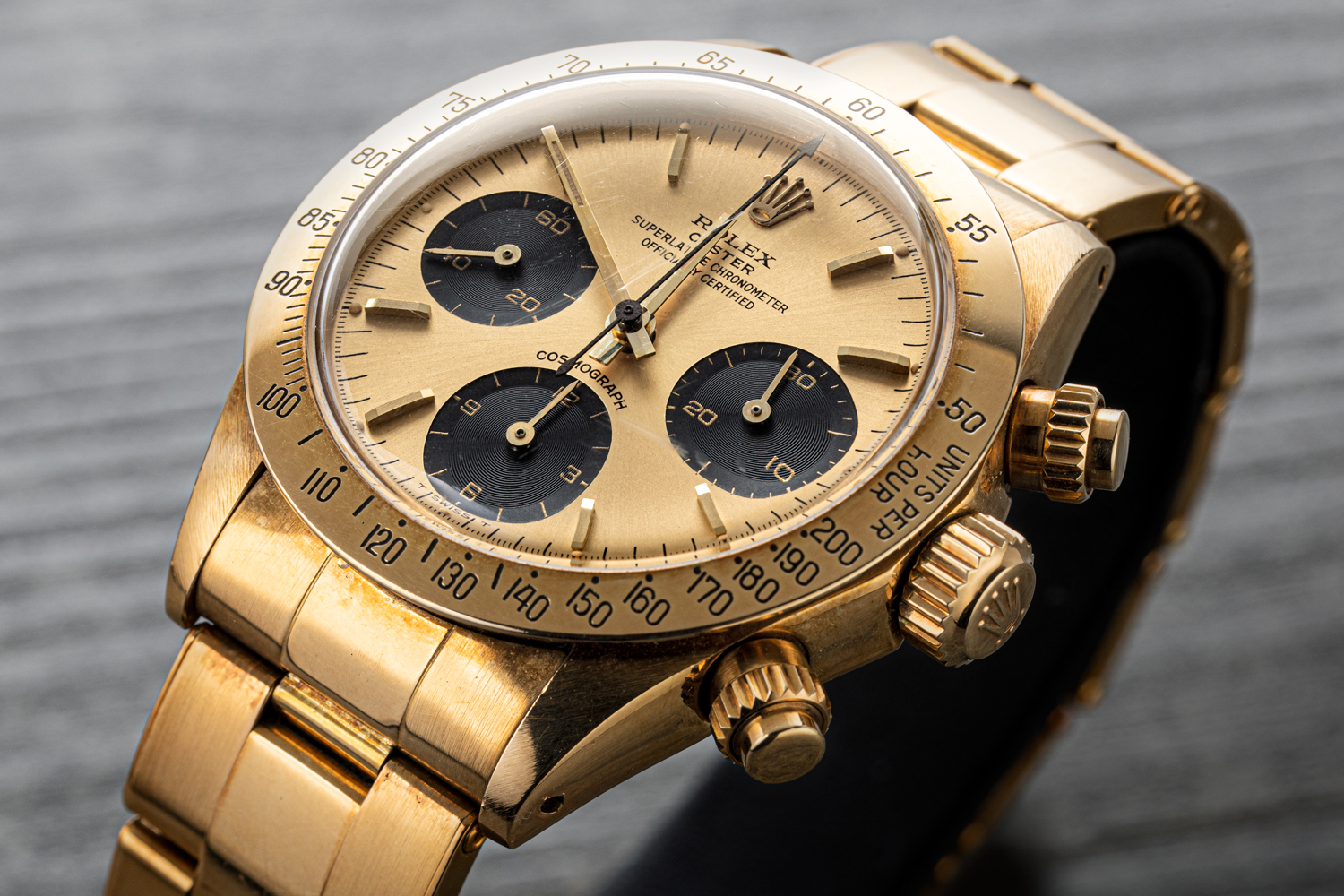
The author’s well-loved and well-used 6265 in 18K yellow gold. The dial and lume plots remain well-kept despite the misting mishap. (Image: Revolution©)
Daytona gold green in dial is configured to optimize badassitude and performance
In contrast, I wear my 116508 everywhere. Yes, I’ve worn it multiple times to spin class, even to those crazy classes that incorporate all kinds of wild arm choreography, and it has lost literally not even a fraction of a second of accuracy. Inside, its caliber 4130, Rolex’s in-house automatic chronograph movement launched in 2000, is the perfect bulletproof engine and a true thing of beauty.
The movement features 201 parts, which is significantly fewer than most automatic chronograph calibers and 60 percent less than the parts in the Zenith El Primero-based caliber 4030, in an effort to simplify it to enhance reliability and accuracy. It is configured to optimize badassitude and performance. Its vertical clutch configuration allows you to keep the chrono on as long as you want without affecting the overall timekeeping accuracy.
This actually is a big deal because the majority of noobs that buy sports chronos don’t even know if their chrono is on or off. And probably don’t care. Don’t even try explaining how a traditional laterally coupled chronograph is a parasitic device when it comes to energy, and thus the underlying amplitude of the balance is affected each time it is engaged. That will only elicit shrugs of “Yeah, dude, whatever.” And honestly, rightly so. It would be the equivalent of telling someone that bought a Porsche 911 Turbo, this car has a turbo but don’t use the turbo too much as that will affect the underlying reliability of the motor. The correct response would be, “Dude, blow it out your ass. I bought this car so I can use the turbo all the time. Even when I’m parked or in neutral.”
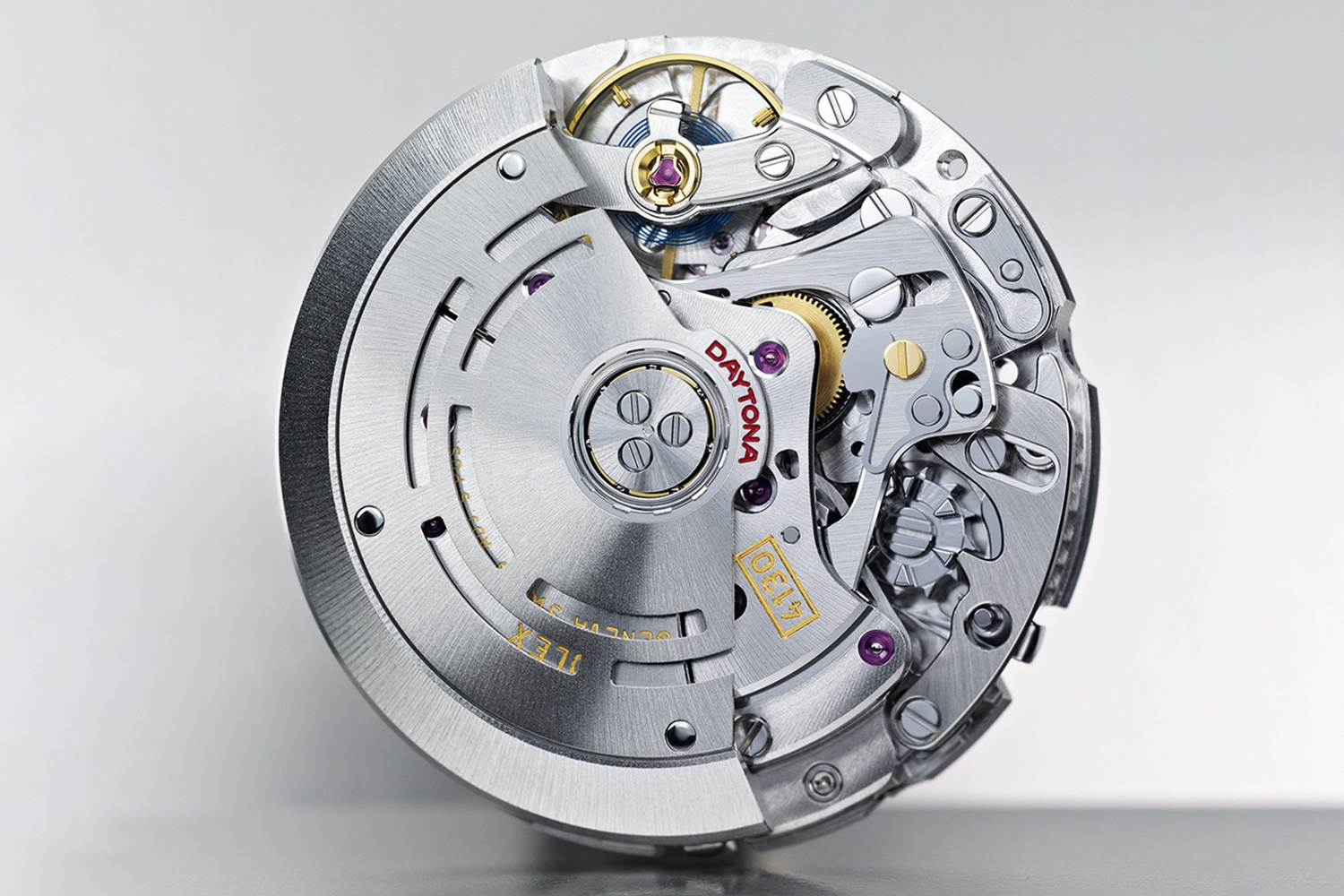
The caliber 4130. Less parts and easier to service. (Image: Rolex)
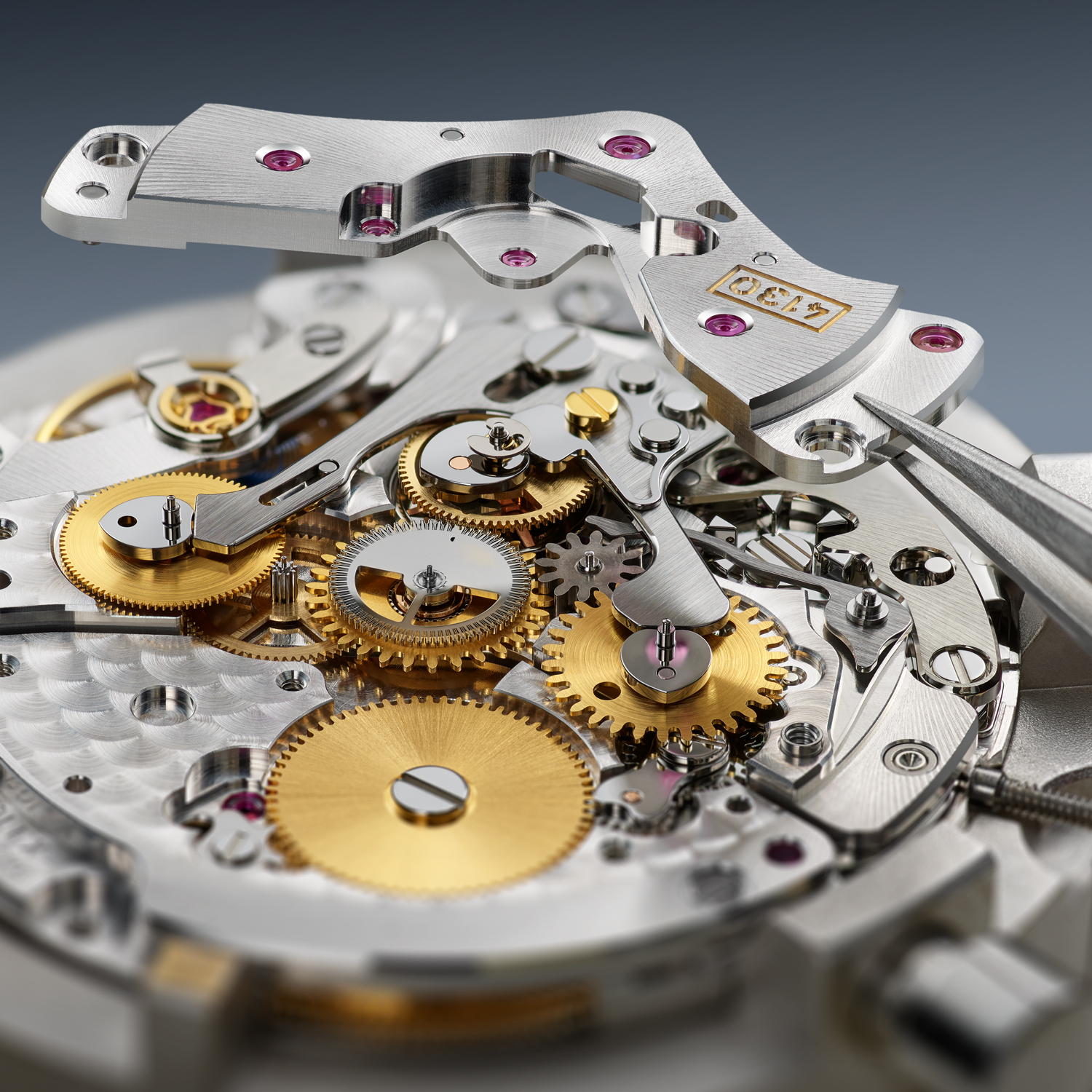
The chronograph wheel train of the caliber 4130. The three wheels placed neatly in a row from L-R: hour counting wheel, chronograph seconds wheel and minute counting wheel. It is the specific positioning of these wheels that gives the subdials room to breathe on the dial. (Image: Rolex)
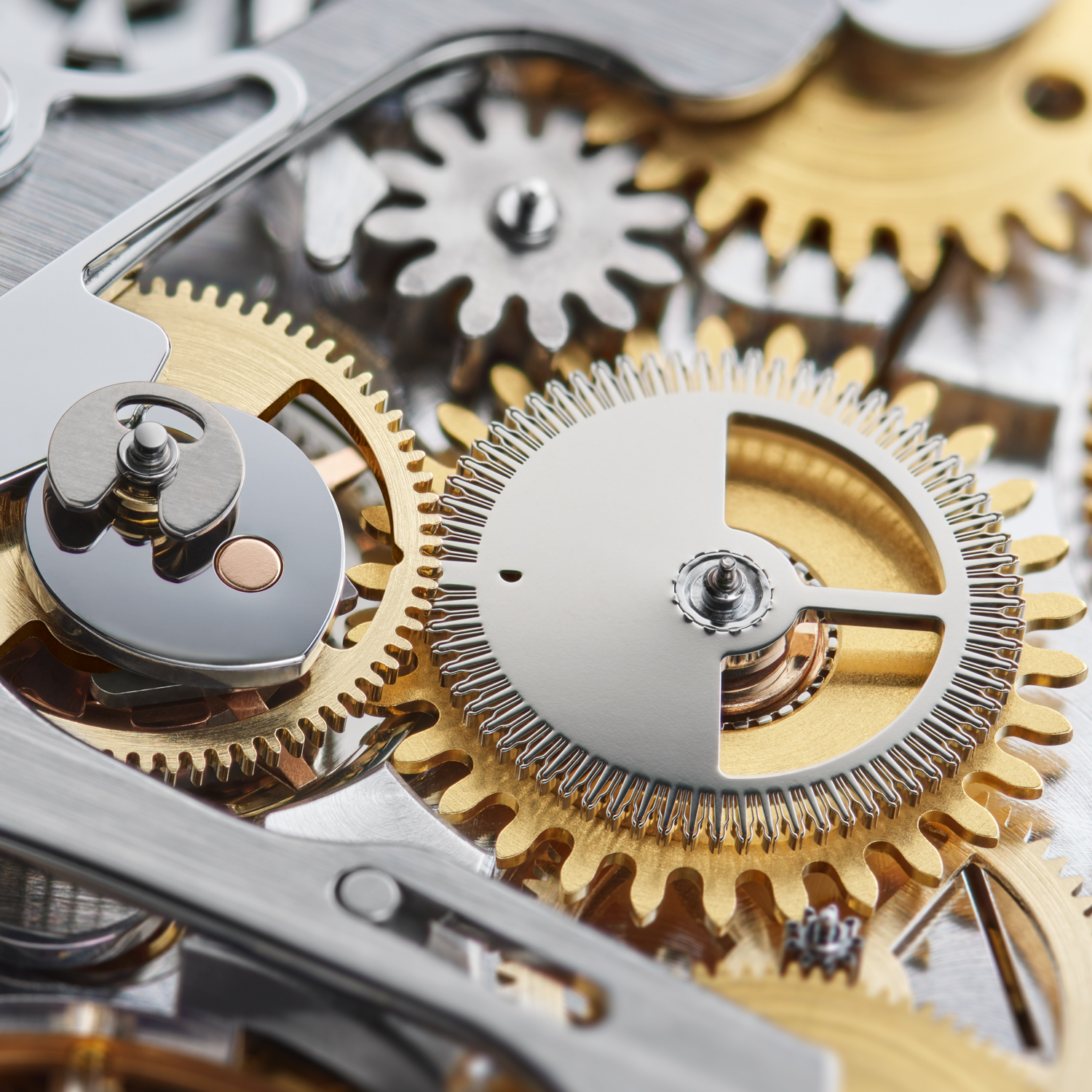
Close-up of the chronograph seconds wheel (right) and vertical clutch (left). (Image: Rolex)
Let’s take a look at column wheel chronographs
The 4130 is column wheel activated, which means all the levers of the chrono function rest on a cool-looking wheel with columns in it that controls start, stop and reset. This is good because column wheel chronographs are considered to be the most sophisticated and haut de gamme or, translated from the French, high end, in the realm of this complication. It probably has an even more nuanced meaning. That’s the thing about French; there are always multiple words with subtly different connotations for the same thing. Like the toilet can be le petit coin or “the little corner.” Or it can be la chiotte which, let’s just say, has a more colorfully colloquial translation. Anyway, I digress. The caliber has a bi-directional automatic winding system mounted on ceramic ball bearings. It has a fully traversing balance bridge and a large free sprung balance wheel.
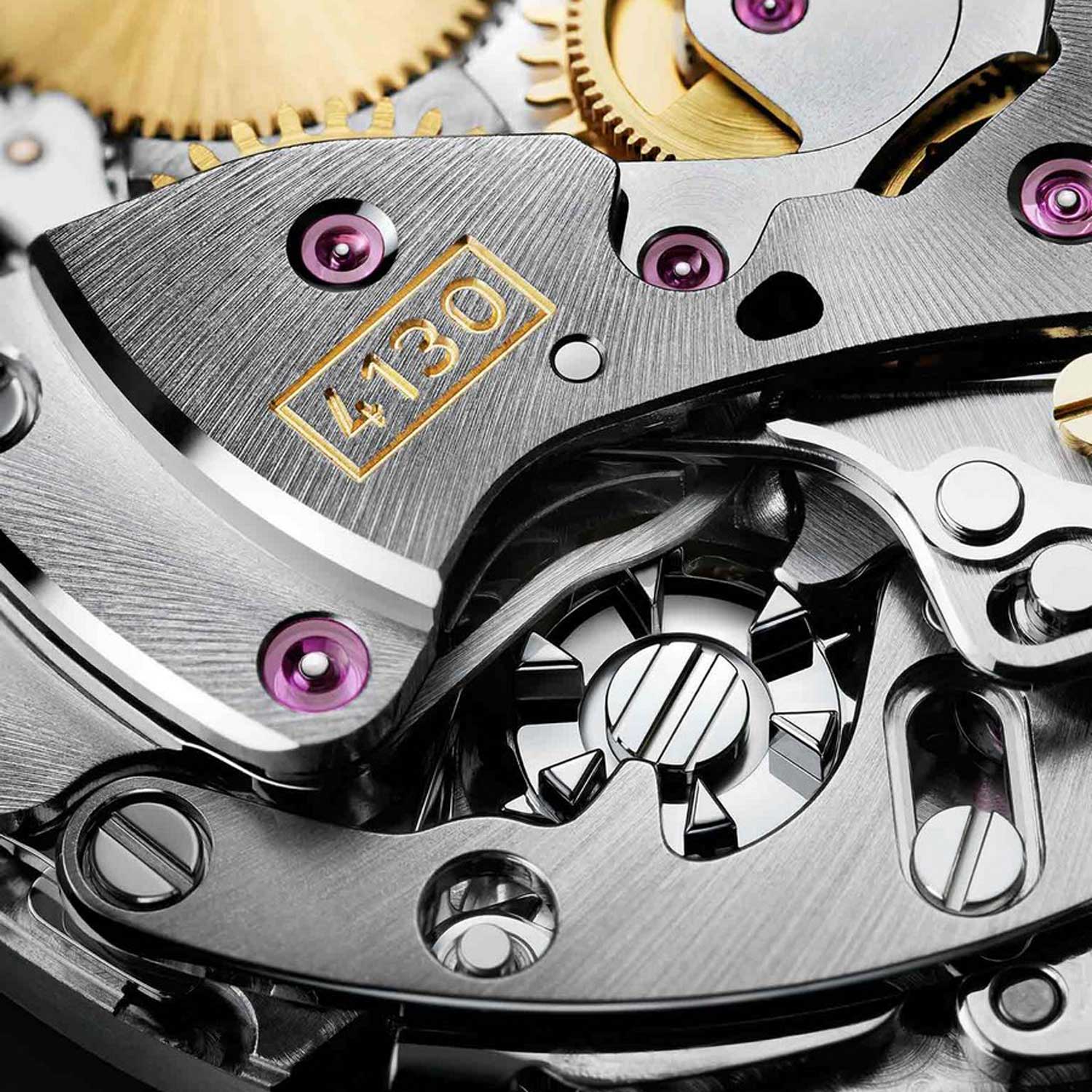
Close-up of the Cal. 4130’s column wheel – master controller of all chronograph functions (Image: Rolex)
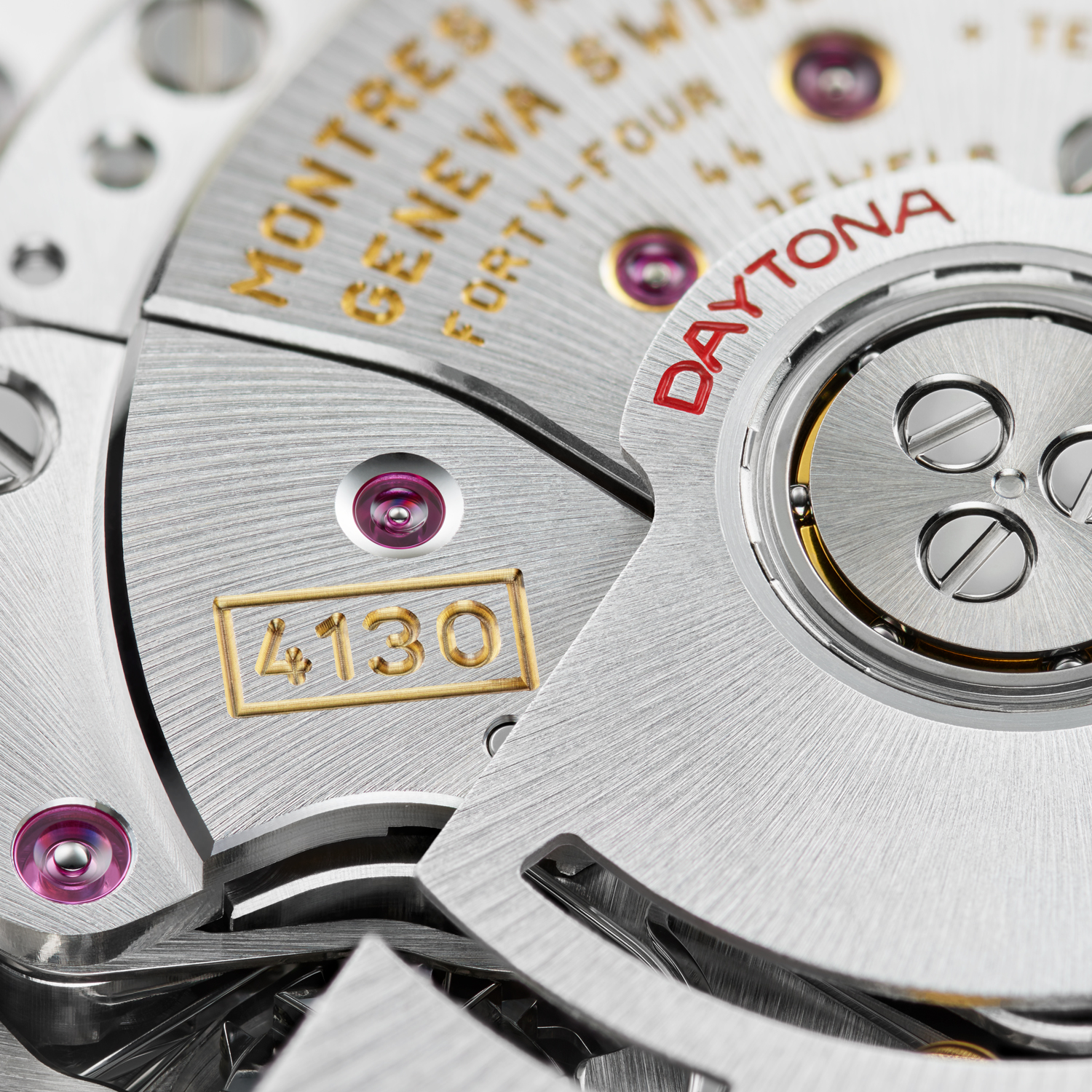
Before the release of the caliber 3235 in 2015, the 4130 was the only movement from Rolex that used ball bearings in the oscillating weight. (Image: Rolex)
Rolex use a unique hairspring material called parachrom
One of my favorite things about the 4130 is that it was the first Rolex chronograph to use a Parachrom hairspring. What is Parachrom? It is Rolex’s proprietary hairspring material which is made in-house. I’ve actually been to the room where they smelt it and then draw it down into wires thinner than the human hair. It is made from niobium and zirconium, two elements that sit next to each other on the periodic table. Niobium is a metal with incredible memory. There used to be YouTube videos of guys taking ultra high end niobium bicycle rims and smacking them into curbs, only to show them spring back into shape immediately. As you can imagine, this is an ideal material for a spring that needs to be as uniform as possible in its breathing. Watches from 2000 to 2005 feature metal-colored Parachrom hairsprings, and then from 2005 onwards, the springs are blue. This is because Rolex developed a new technique to enhance the oxide layer on these springs and decided to use this blue color as part of their signature. The 4130 movement beats at 28,800 vibrations per hour and offers a 72-hour power reserve.
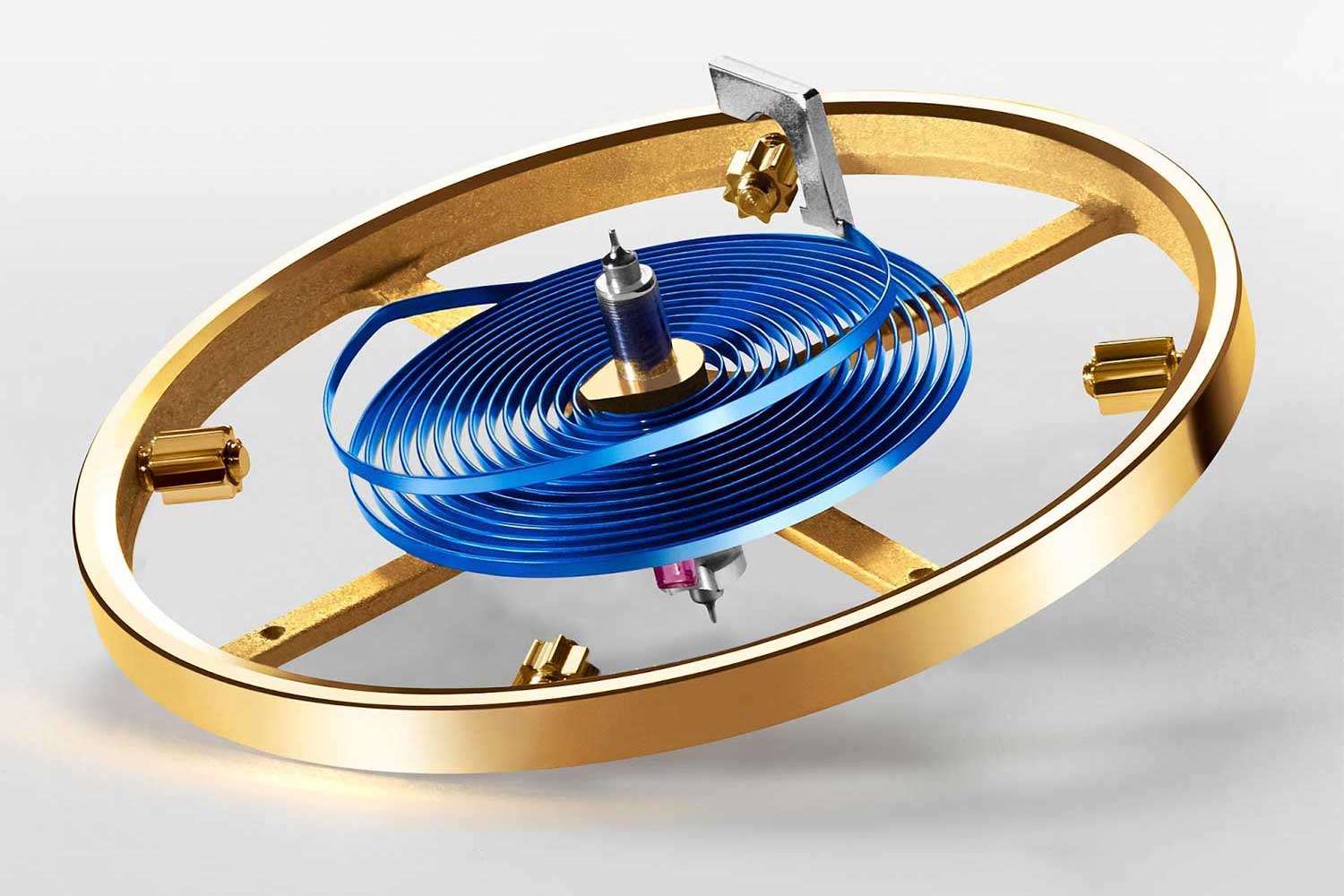
The Parachrom blue hairspring is made of 85% niobium, zirconium and oxygen. The oxide layer which gives its blue hue is meant to enhance the spring’s stability. (Image: Rolex)
Rolex Chromalight has a longer lifespan than other luminous materials
OK, those are all statistics. This is the real-life takeaway about the 116508. Like all modern Rolexes, it functions perfectly all the time no matter what you are doing, and that makes it the perfect watch to live with. Every aspect of it, down to the lume used, a proprietary Luminova named Chromalight, which lasts much longer than traditional Super-LumiNova, is perfectly realized. I always wear a watch to sleep because my dachshund Bandit’s favorite hobby is to try to trick me into waking up earlier so I can walk her and, most importantly, feed her breakfast. With my Daytona on my wrist, I can take a quick peek at the time and retort, “Bandit, it’s five in the bloody morning, go back to bed,” when I hear the pitter patter of her paws, which is her way of waking me up. You would be surprised at how many watches’ luminous indexes are illegible after a night’s sleep.
The Aesthetic Evolution of the Rolex Daytona 116500 series
OK, let’s get down to the looks of the 116508. The watch is incandescently hot. I mean, Jane Birkin and Brigitte Bardot in the 1973 Don Juan movie directed by Roger Vadim, where Don Juan is a woman and that woman is well… Brigitte Bardot. Which means mind-blowingly hot.
A better look due to the subdials positioning
Again, huge props to the unknown designer who created the 16500, because the iconography of this watch carried over to the 116500 series is simply transcendent. However, I have to say without any bias that the modern watch is even better looking. Why? This has to do with the positioning of the subdials. Because the 16500 used an El Primero based caliber that was detuned from 36,000vph to 28,800vph to provide better reliability and power reserve, it had to live with the placement of the subdials on the El Primero.
The genius of the 16500 is that the dial is very beautiful despite the subdials being very close together. This is done with a fairly bold chapter ring around each of them for their indexes that creates the optical illusion that they are spaced wider apart then they really are. Also, at 40 millimeters in diameter, the case is just the perfect size to create an overall sense of design harmony and proportion.
The Oyster case with its crown guards, the thick sturdy crown, the perfectly sized pushers with locking mechanism, the thickness of the bezel; it all comes to create what I honestly feel is the greatest masterpiece of sports chronograph design in the 20th century. (The Patek 1463 is probably a close second.)
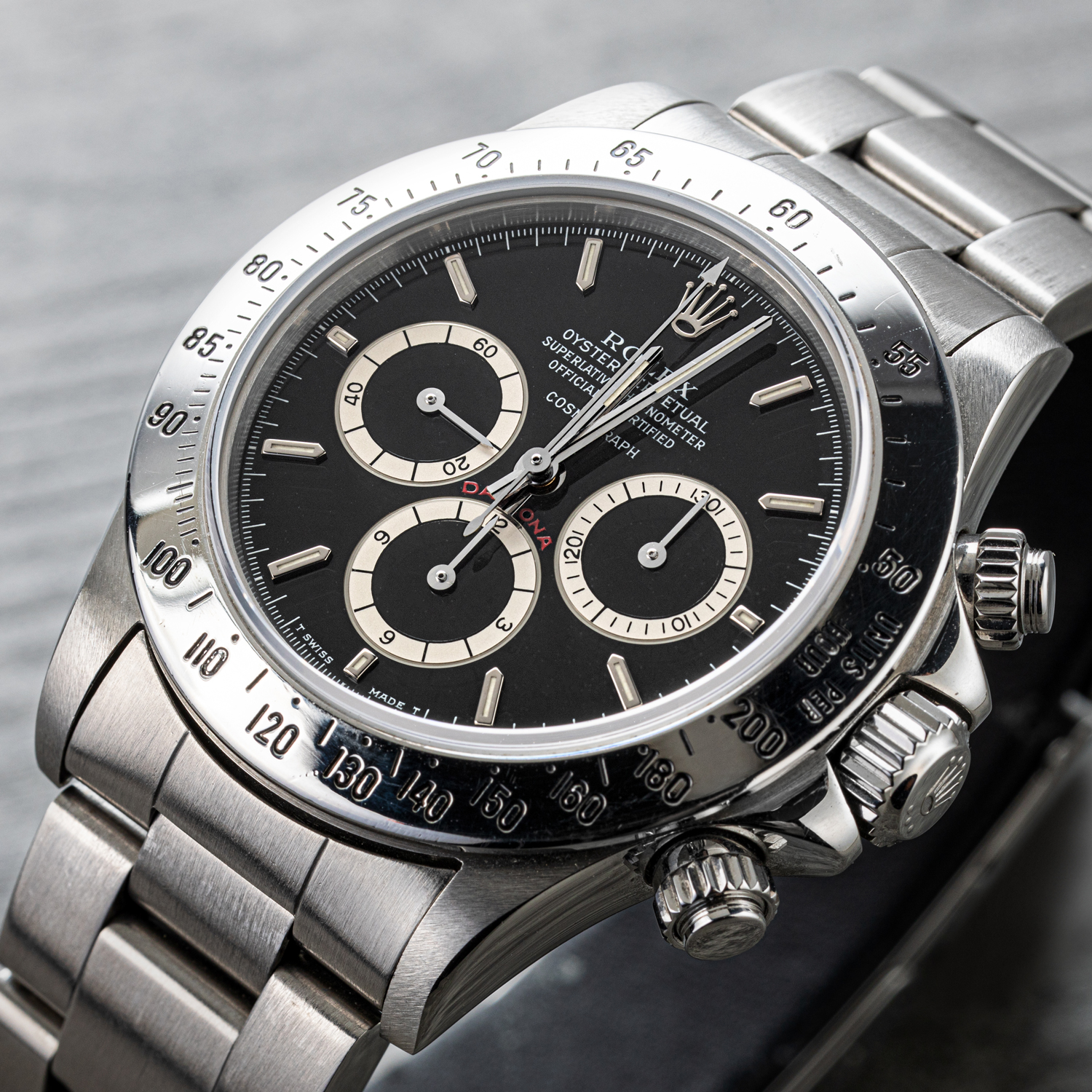
Closely-spaced subdials but still perfectly proportioned. The 16520 is the stainless steel version of the 16500 series of Daytonas. (Image: Revolution©)
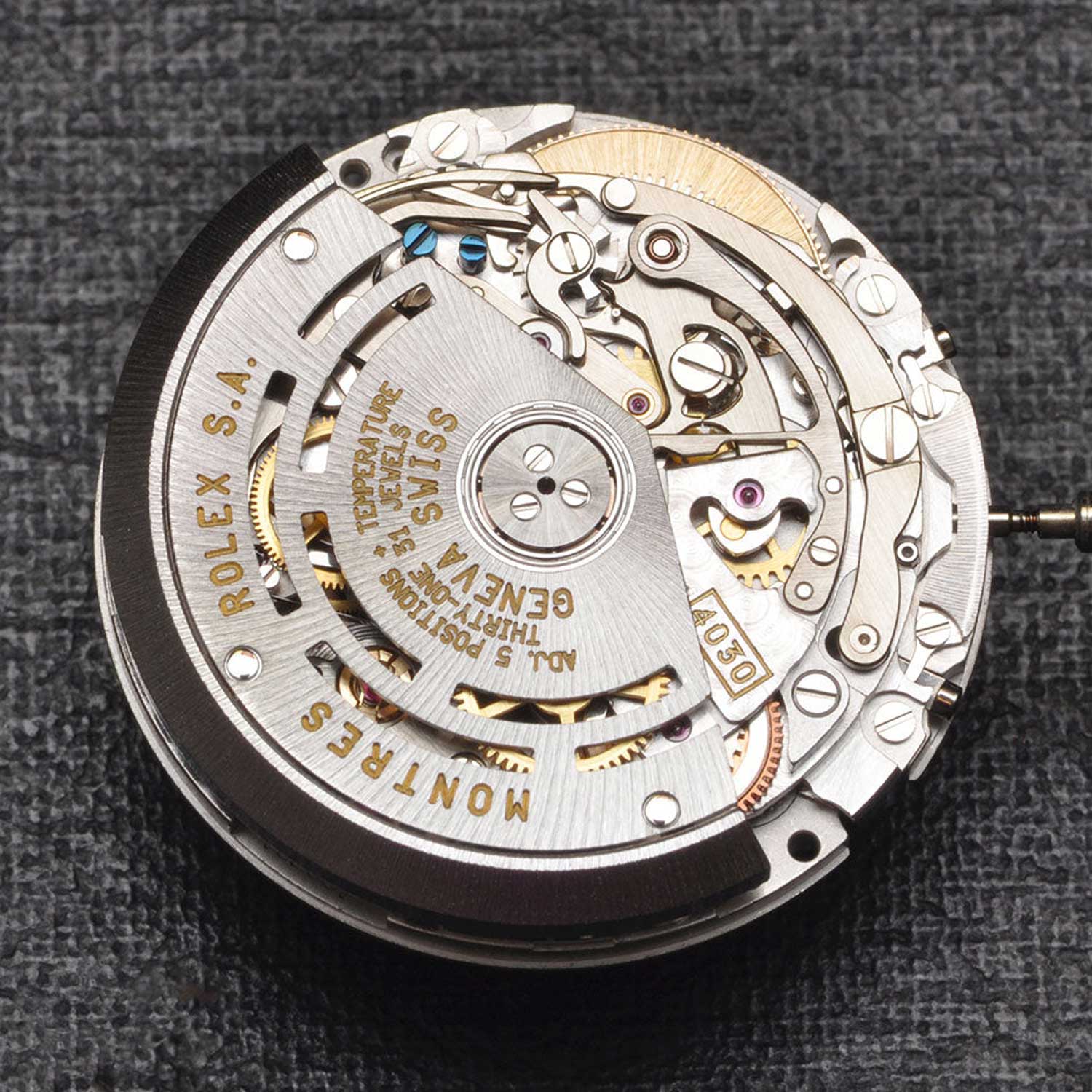
Rolex reworked the Zenith El Primero extensively for the 16500 series - retaining only 50% of the original parts - to turn it into the caliber 4030. (Image urdelar.se)
A distinguish movement with ideal sundial placement
But when it came time to create the 116500 series, the dial and movement were conceptualized at the same time. This allowed the great minds at Rolex to create a movement that had ideal placement of the subdials. The immediate way to distinguish the 116500 series from its predecessor, the 16500, is that the center of the subdials at nine and three o’clock are higher than the horizonal line stretching from the nine o’clock index to the crown. The other way is that the subdial configuration is different. In the Zenith-based watch, you have the hour totalizer at six and then continuous seconds at nine and the minute counter at three o’clock. In the in-house movement powered 116500 series, you have the hour counter at nine, the minute counter at three o’clock and the continuous seconds at six o’clock. But one major improvement for the modern watch relates to its tactile feel. It feels wonderfully and perfectly smooth, and perfectly executed. The crown and pushers offer just the correct amount of grip but are still soft against the back of the hand. It is amazing how the vast majority of brands make crowns that are simply too sharp. Locking and unlocking the crown or pushers is like opening or closing the door of a fantastic automobile. The bolder tachymeter markers are far more visible and modern in font. And the magnificent Rolex dial exudes a profound visual richness especially when sunlight plays across. The watch is just perfect. The last thing to note is that while the previous generation steel Daytonas used 316 steel, by the time the 116500 series was launched, steel watches were crafted from more resistant 904 steel.
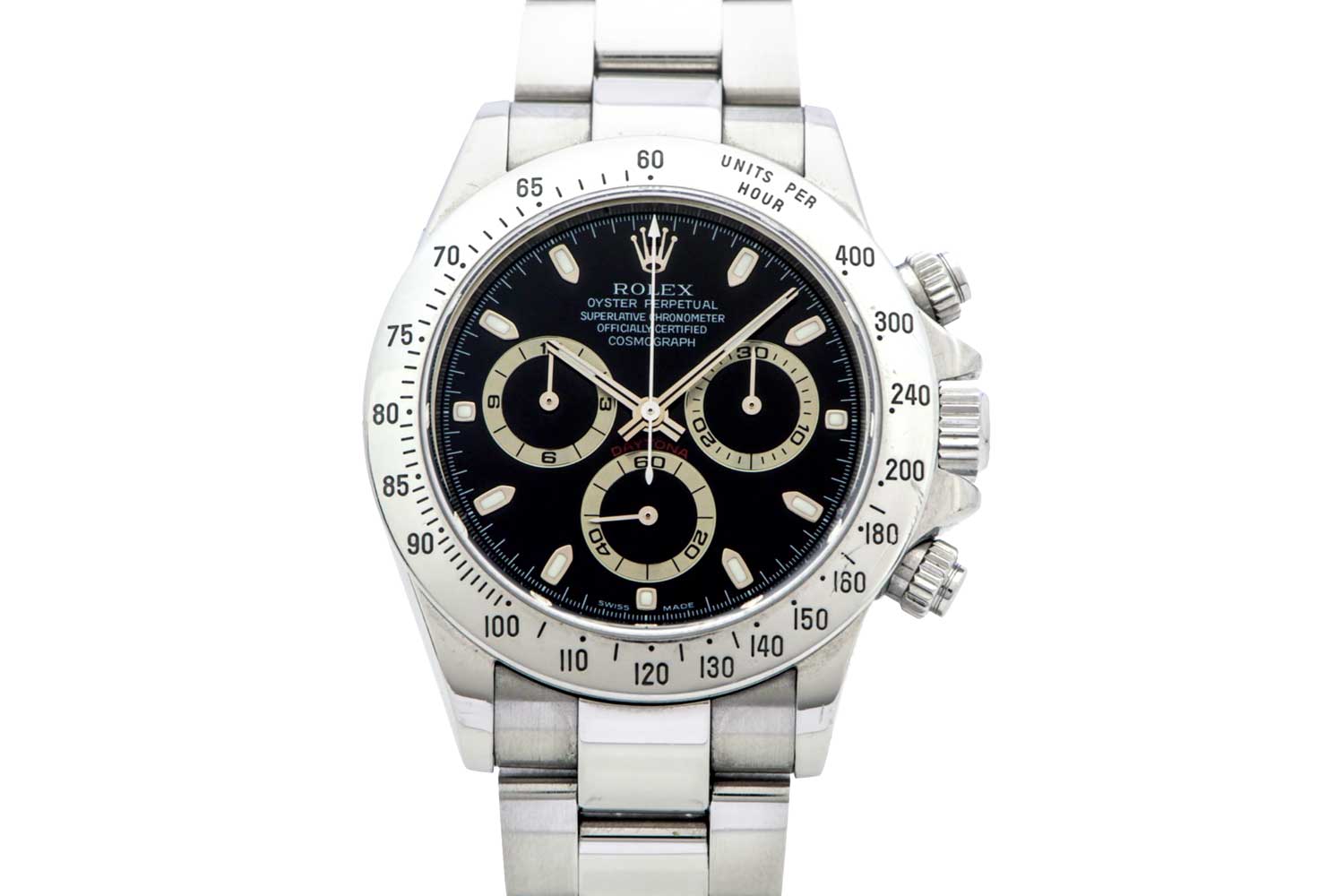
New steel, new movement, new dial layout. The 116500 series was a game-changer in the evolution of the Daytona. (Image: Antiquorum)
Rolex daytona 116500 series evolution since its launch in 2000
OK, enough of me gushing over my Daytona. Now, let’s look at the evolution of the amazing 116500 series. As I said before, it was launched in 2000. What is interesting is that the modern Daytona has gone through subtle design evolutions over time. In the same way that all Submariners began to incorporate the “maxi” dial hands and indexes launched in the 16610LV, aka the “Kermit,” the 116500 series initially had thinner hands and indexes like the 16500 series but naturally gravitated to bolder units of both so as to enhance visibility. There is now a cult of collectibility around these early in-house Daytonas, and if these appeal to you, I suggest strike now before their values rise prohibitively. In 2011, we had the introduction of reference 116515LN, which brought the Cerachrom bezel to the Daytona in an Everose gold (Rolex’s proprietary rose gold that doesn’t fade in hue, thanks to the addition of platinum to the alloy), black dial beauty that featured first a black alligator strap, and then an Oysterflex bracelet — a rubber bracelet molded over titanium elements that is incredibly comfortable. By this time, Rolex had already implemented Cerachrom inserts for both the Submariner and the GMT-Master II families. The practical benefits of the bezel are extremely high scratch resistance and its stunning glossy vibrant luster never fades. It should also be pointed out that in the Sub and GMT lines, ceramic is used for the bezel inserts while in the Daytona, the entire bezel is made from this modern material.
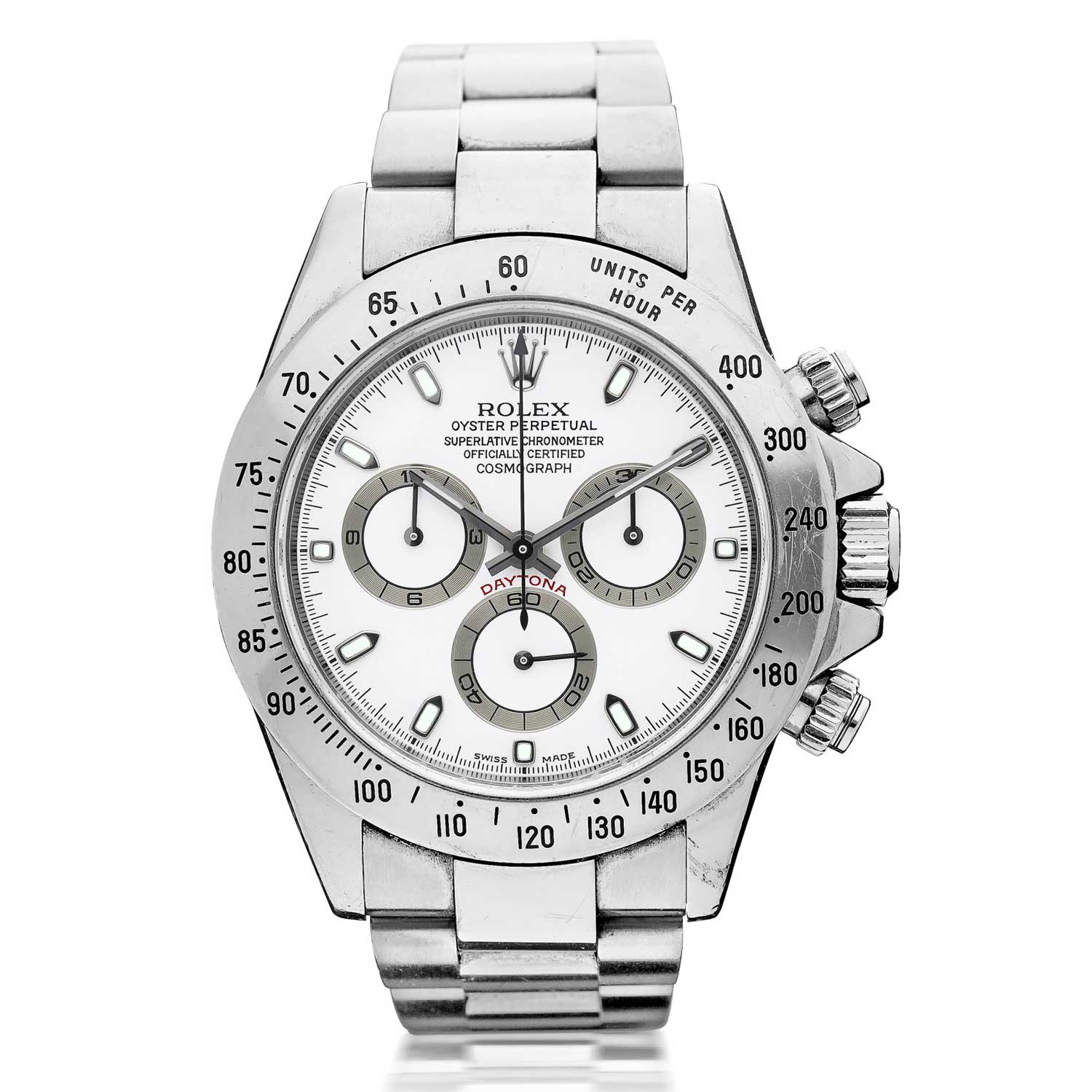
Note the size of the hands of this 116520 from 2002 compared with the hands of the 116520 from 2012 on the right. (Image: Sotheby’s)
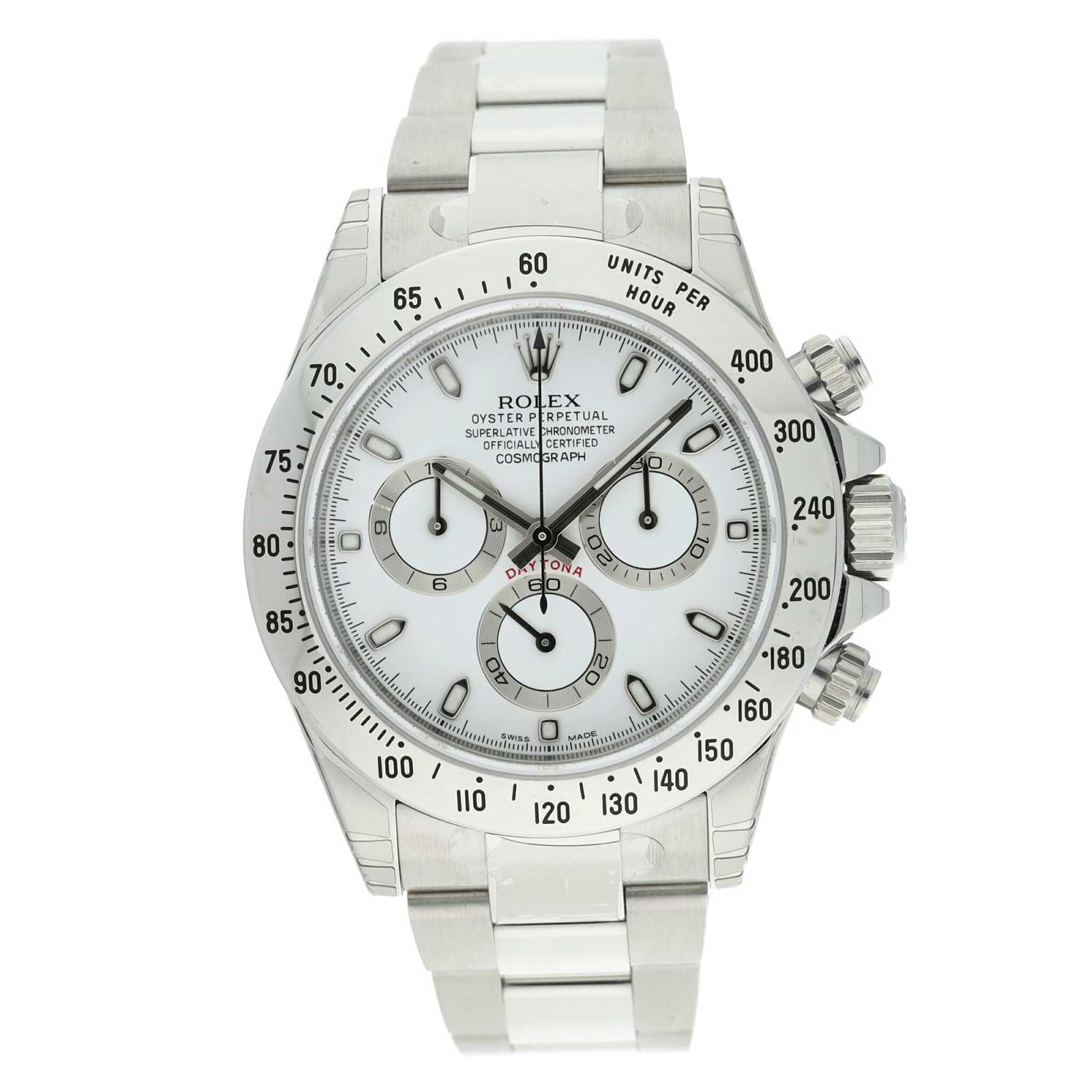
A 2012 116520 with upsized “maxi” hands. (Image: Sotheby’s)
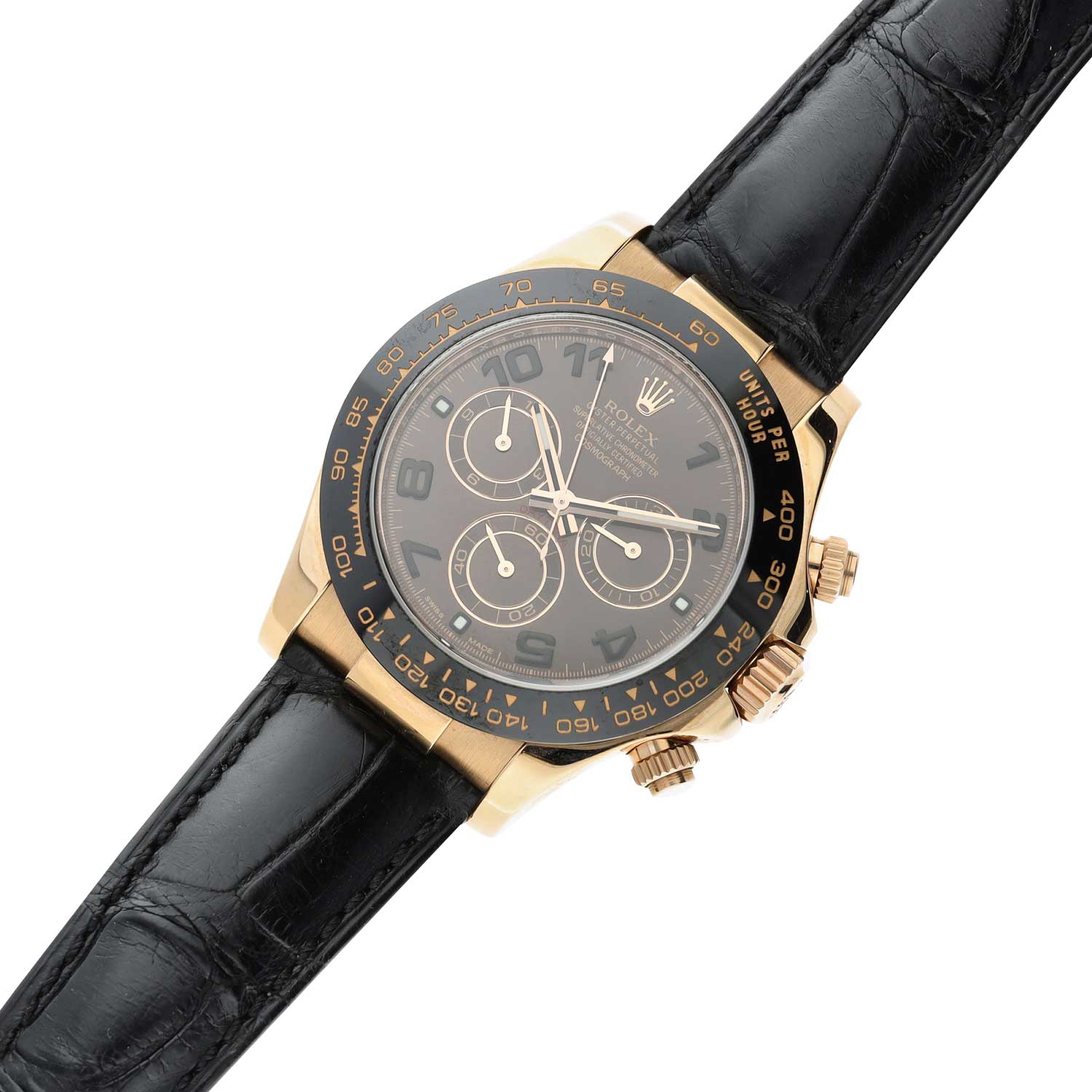
The 116515LN made its debut at Baselworld 2011 with an alligator strap and it was the first Daytona to sport the polished Cerachrom bezel. (Image: Sotheby’s)
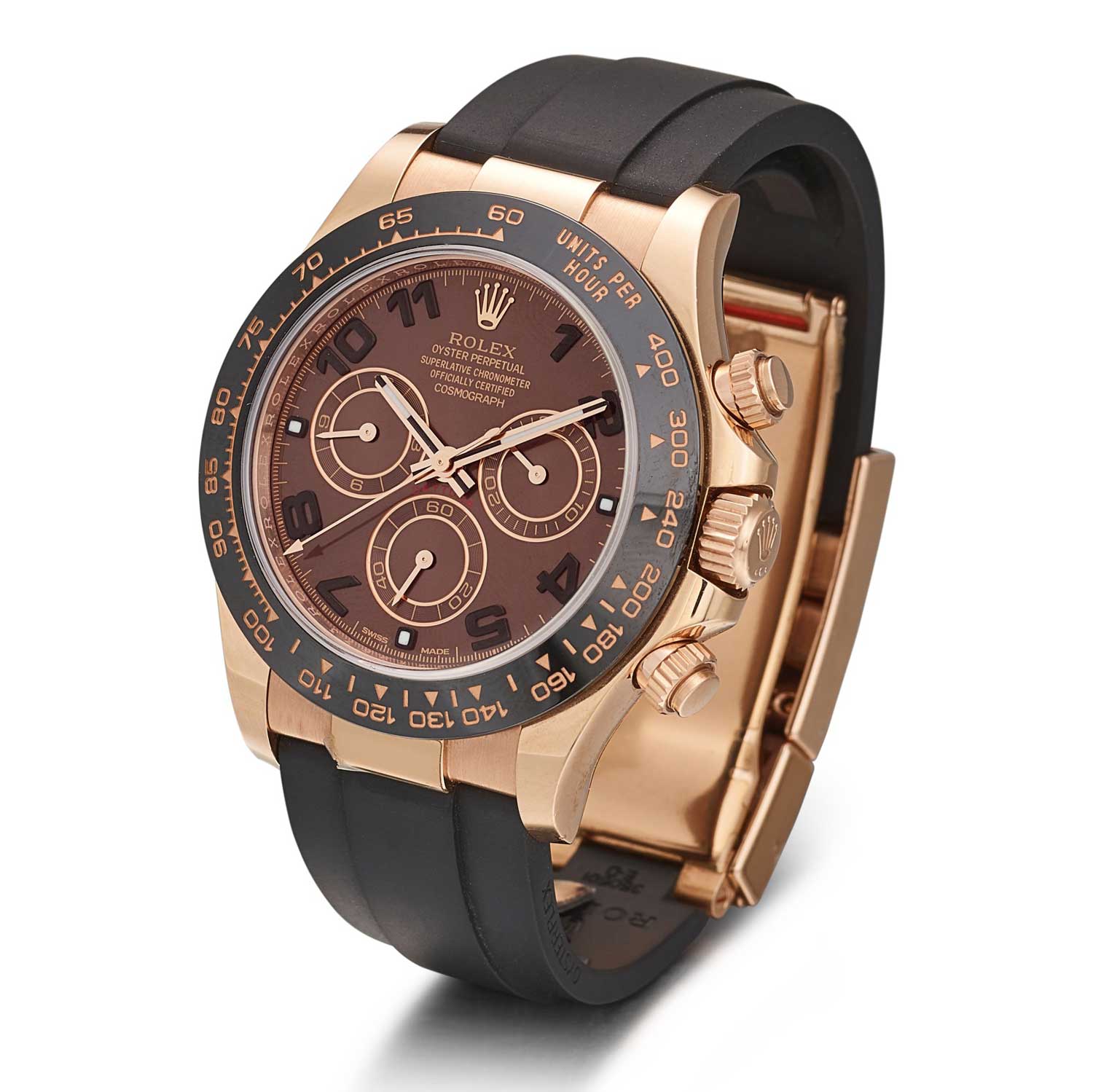
The Oysterflex bracelet (yes, Rolex calls it a bracelet and not a rubber strap) wears incredibly comfortably due to its curved profile. (Image: Sotheby’s)
Daytona’s 50th anniversary marked the Launch of the Cerachrom bezel
The next appearance of the Cerachrom bezel happened in 2013 on the 50th anniversary of the Daytona. I recall I had the great honor of being asked to write the Daytona story to commemorate this milestone in Rolex’s in-house magazine. The watch in question featured a stunning ice-blue sunray dial contrasted with a platinum case and a chocolate brown ceramic bezel. This has become one of the most sought after versions of the 116500 series, and there are two particular endgame versions of this watch, one with factory baguette diamond indexes and another with applied Eastern Arabic indexes made for the Middle East market. Three years later, in 2016, Rolex dropped the first Cerachrom bezel steel Daytonas and, just like that, the 116520 no longer came in a metal bezel version. To me, this was an homage to the aesthetics of the venerable 6241’s contrasting black Bakelite bezel inserts.
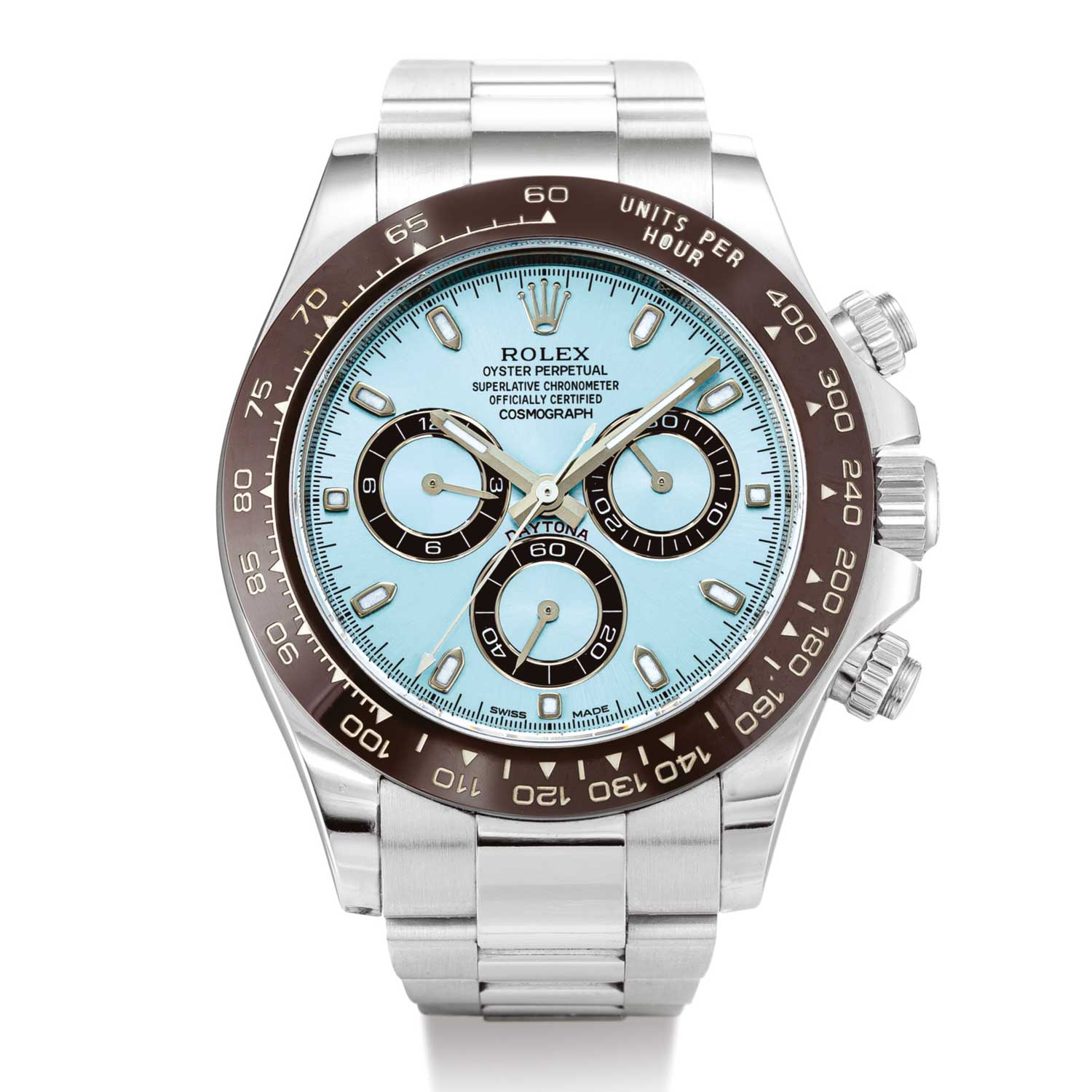
The 50th anniversary of the Daytona in 2013 was marked by the launch of the 116506. Somehow the pairing of the ice-blue dial and brown Cerachrom bezel just works. Not forgetting that it came in the stealthiest of all precious metals: a full platinum case and Oyster bracelet. (Image: Sotheby’s)
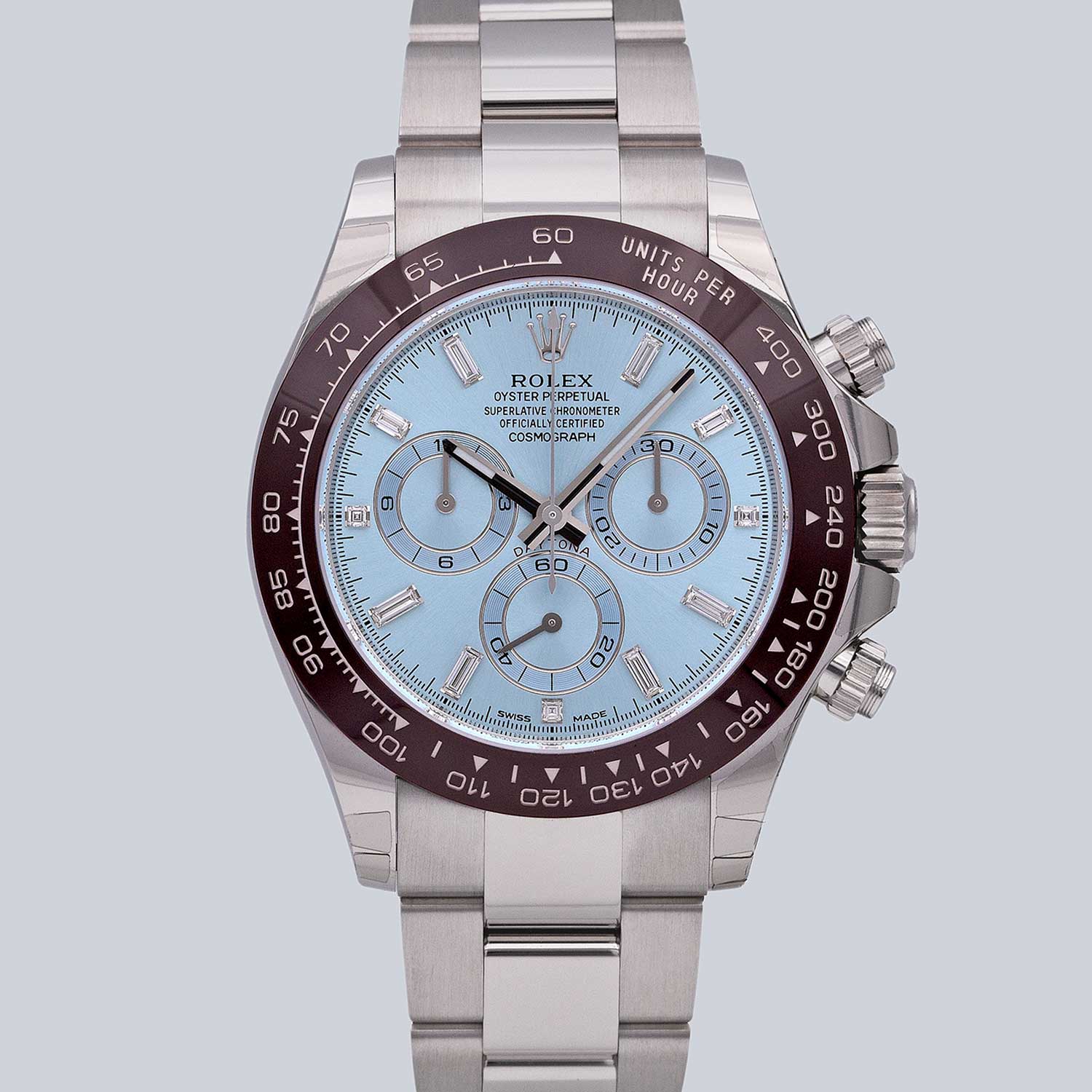
A rare variation of the 116506 with factory baguette diamonds for the hour indexes. (Image: Maxdary)
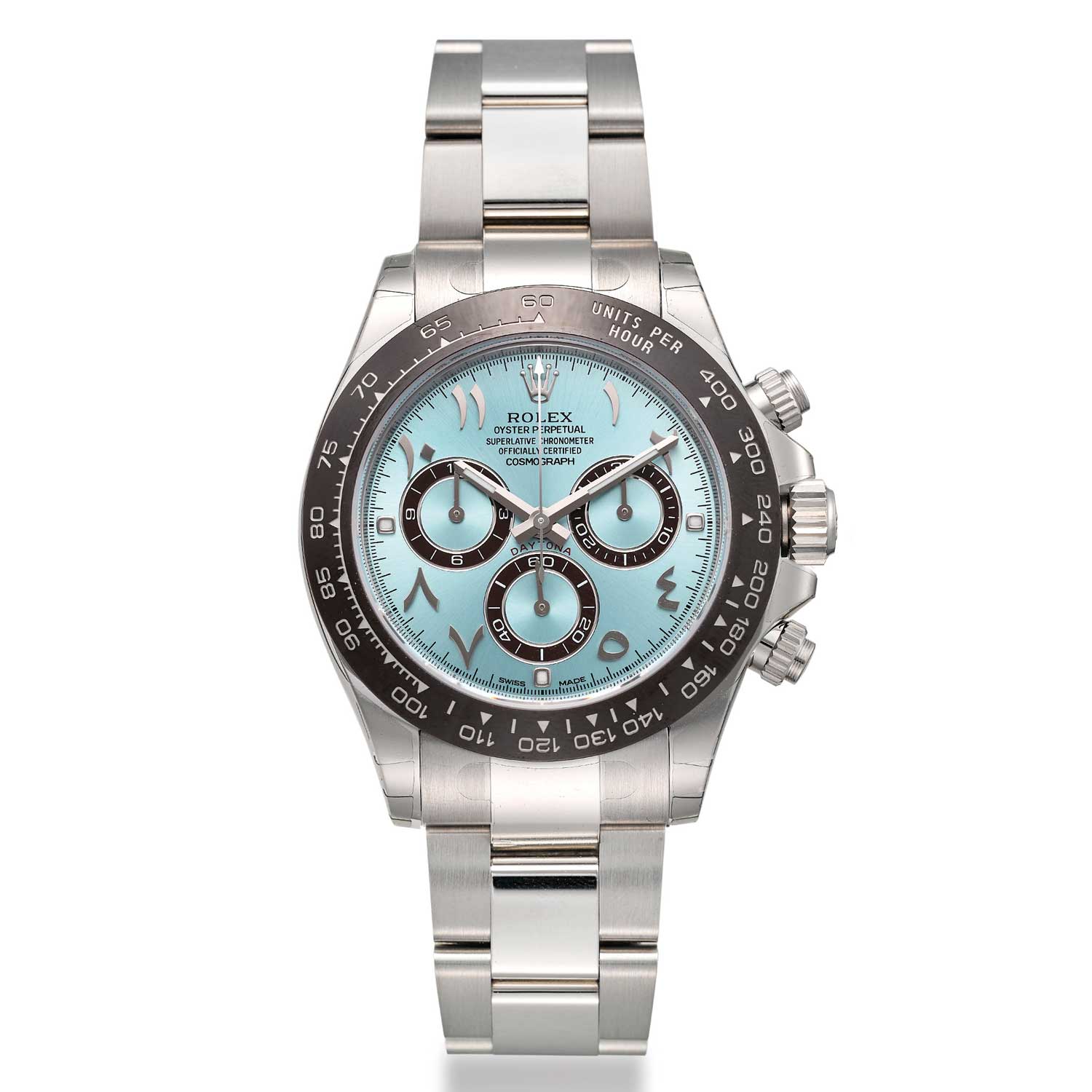
Rolexes destined for the Middle Eastern market have always commanded a premium over their regular-dial brethren. This 116506 with Eastern Arabic hour indexes sold for USD100,000 in March 2019 at Christie’s. (Image: Christie’s)
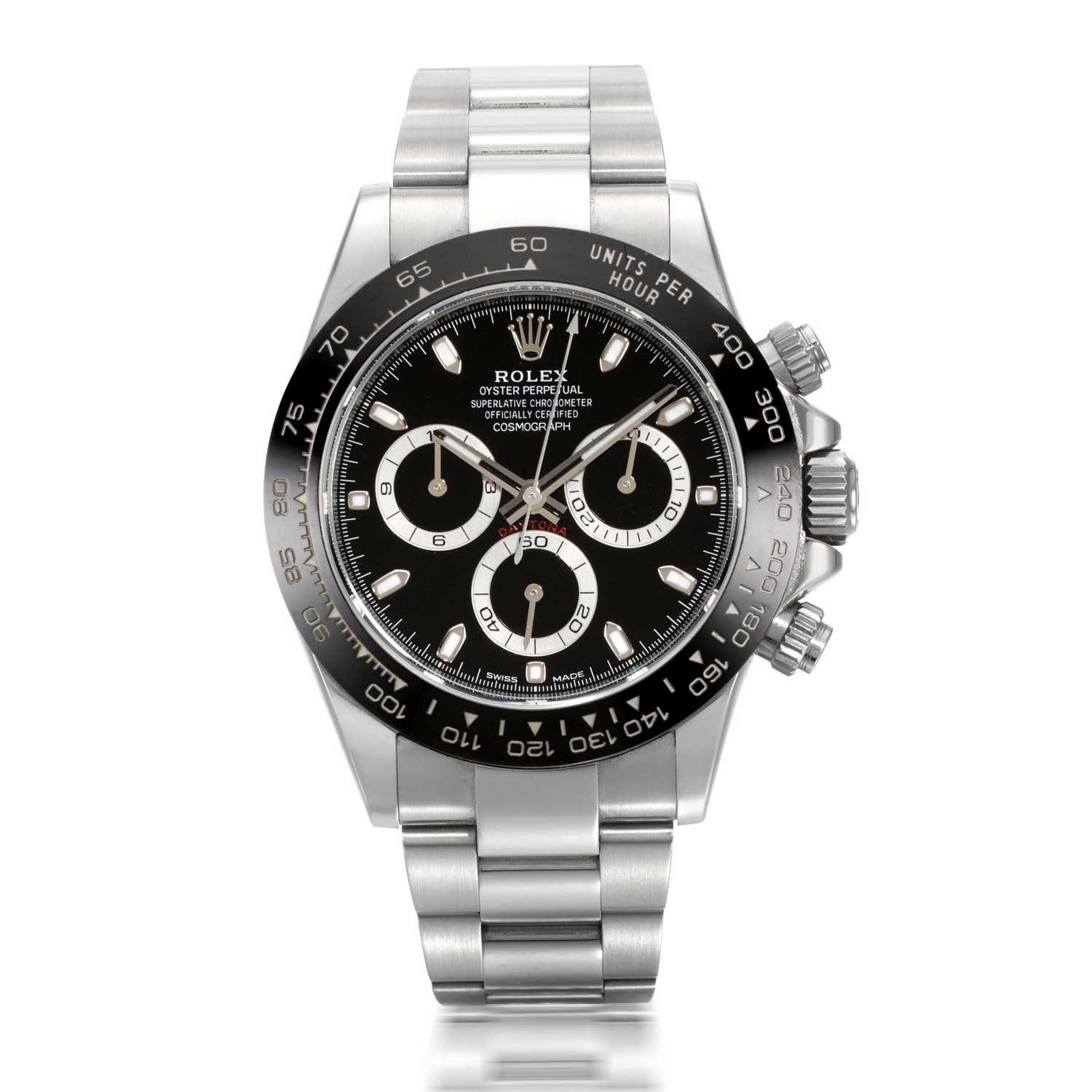
In 2016, the standard stainless steel Daytona was now given the reference 116500LN. It now had the Cerachrom bezel first seen five years ago on the 116515LN. Cue the wait lists… (Image: Sotheby’s)
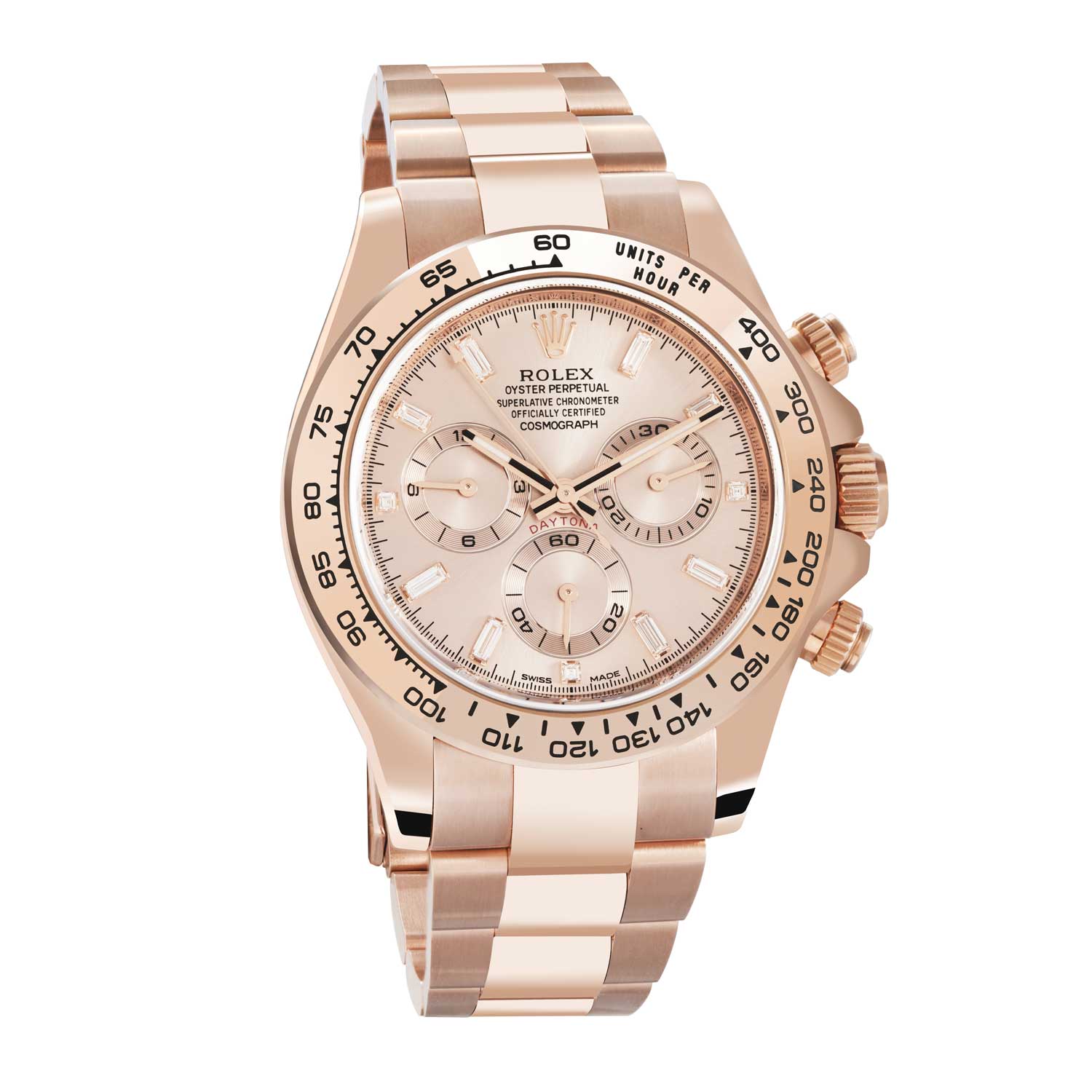
The 116505 in full Everose gold with a sundust dial and baguette diamond indexes. Tone on tone mood. (Image: Rolex)
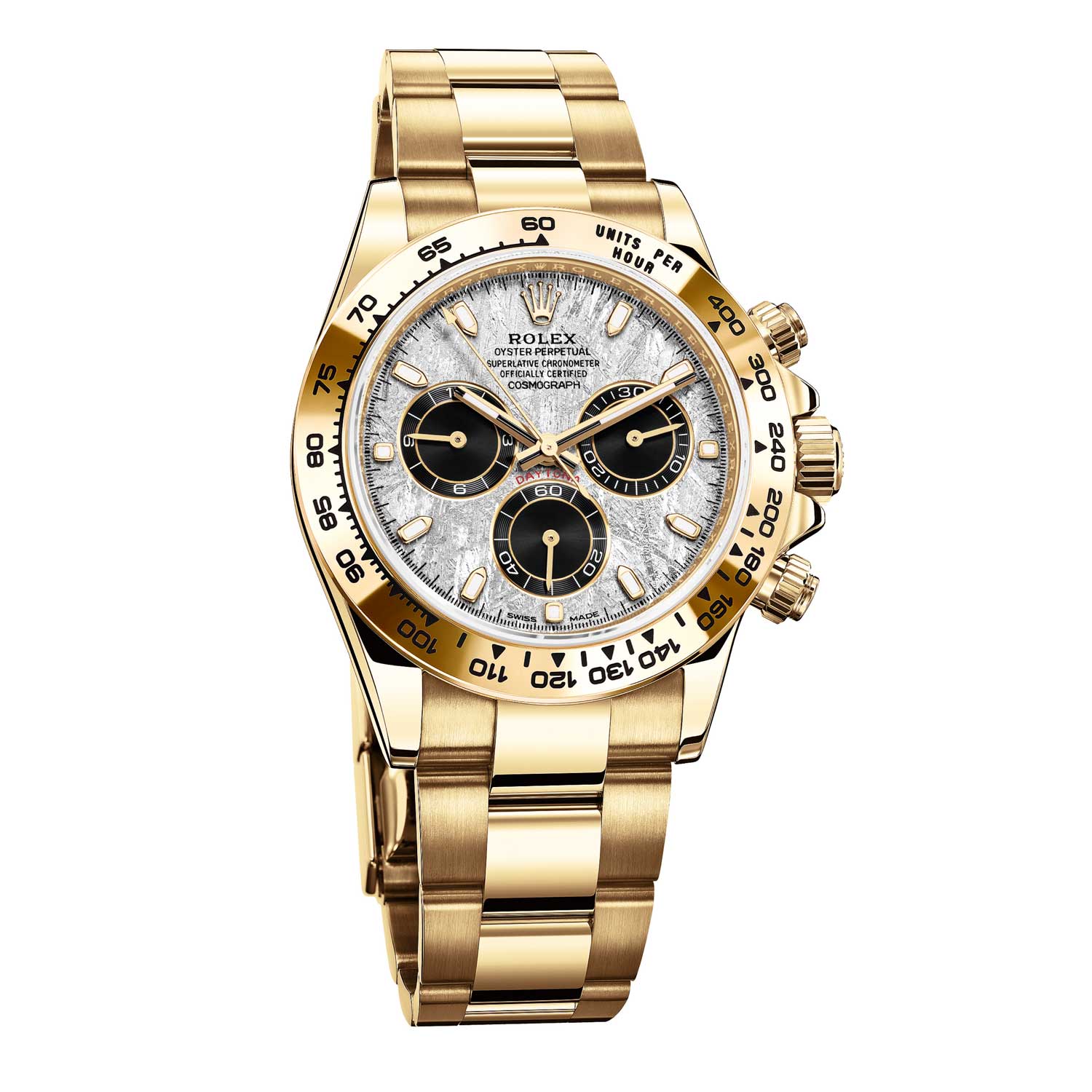
The 116508 now comes with a rare meteorite dial, reserved only for very special models in precious metal. Rolex meteorite dials are sliced from the “Gibeon” meteorite that crashed landed to earth millions of years ago in what is now the Namibian desert, near the town of Gibeon. (Image: Rolex)
Why the 116508 reference became an obsession
Last year, Rolex launched two of the most stunning precious metal Daytonas of all time: an Everose gold model combined with a sundust dial and featuring baguette diamond indexes, and a yellow gold Daytona with a mind-blowingly cool meteorite dial. Both of these instantly became sources of serious obsession for me. But when it finally came time to purchase a modern Daytona (through an act of extraordinary kindness), I knew there was only one watch for me: the stunning emerald dial, yellow gold 116508.
Why this watch? Well, let’s flashback to 2016 when the world was going crazy about the new ceramic bezel steel 116520. As it happened, my friend, Patrick Boutellier, who was at the time general manager of Rolex Australia (he’s now become an authorized retailer), happened to walk past me and I noticed something remarkable on his wrist. It was this very special Daytona, and from that day to today, I have not been able to stop thinking about that watch.
Rolex Chairman’s Tale
I have a theory about the inspiration for the 116508, which as with most of my theories, is probably incredibly wrong, but for your amusement, here it is. In 1991, Rolex created a version of the 16528 that has become legend. That is, the “Chairman” — a yellow gold Daytona with a distinct and stunning galvanized ocean blue sunray effect dial with matching colored subdials and contrasting yellow gold tracks. The mythology goes that around 10 pieces of this watch exists. The dials were created for Rolex by Singer dial manufacturer. For whatever reason, they were never put into production. Instead, the dials were distributed to the highest echelon of management at Rolex and ended up inside yellow gold Zenith-powered Daytonas. As with many ultra rare Rolexes, the original story of the “Chairman” is impossible to confirm, simply because it is Rolex’s policy to not comment on such things. There was, of course, the speculation that these watches were created by fitting period-correct 16528 watches with Singer sample dials. While my natural inclination with Rolex urban myths leans towards skepticism, I am inclined to believe in the veracity of the Chairman story for the following two reasons.
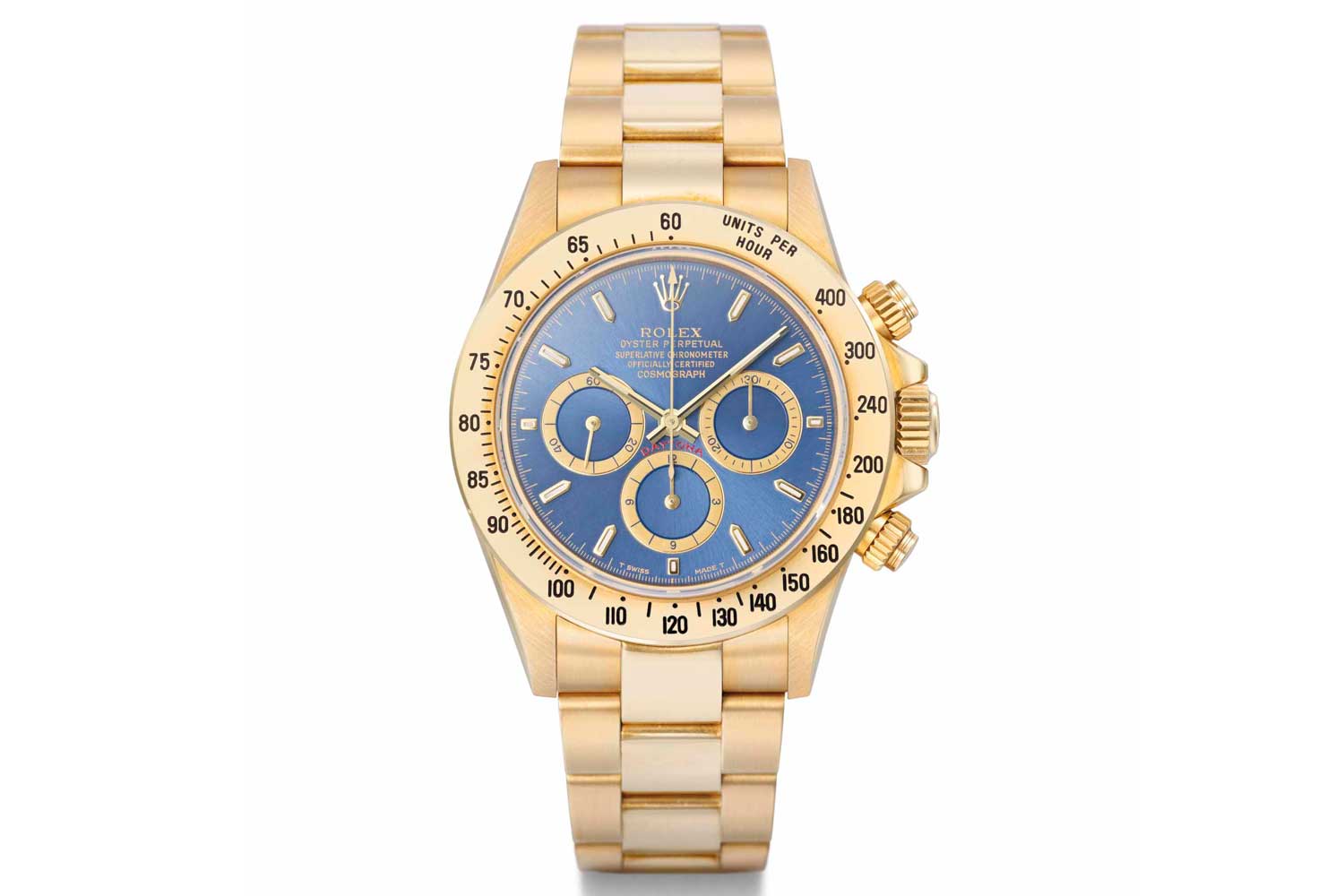
The mythical 16528 “Chairman” whose true backstory we may never be certain of. (Image: Christie’s)
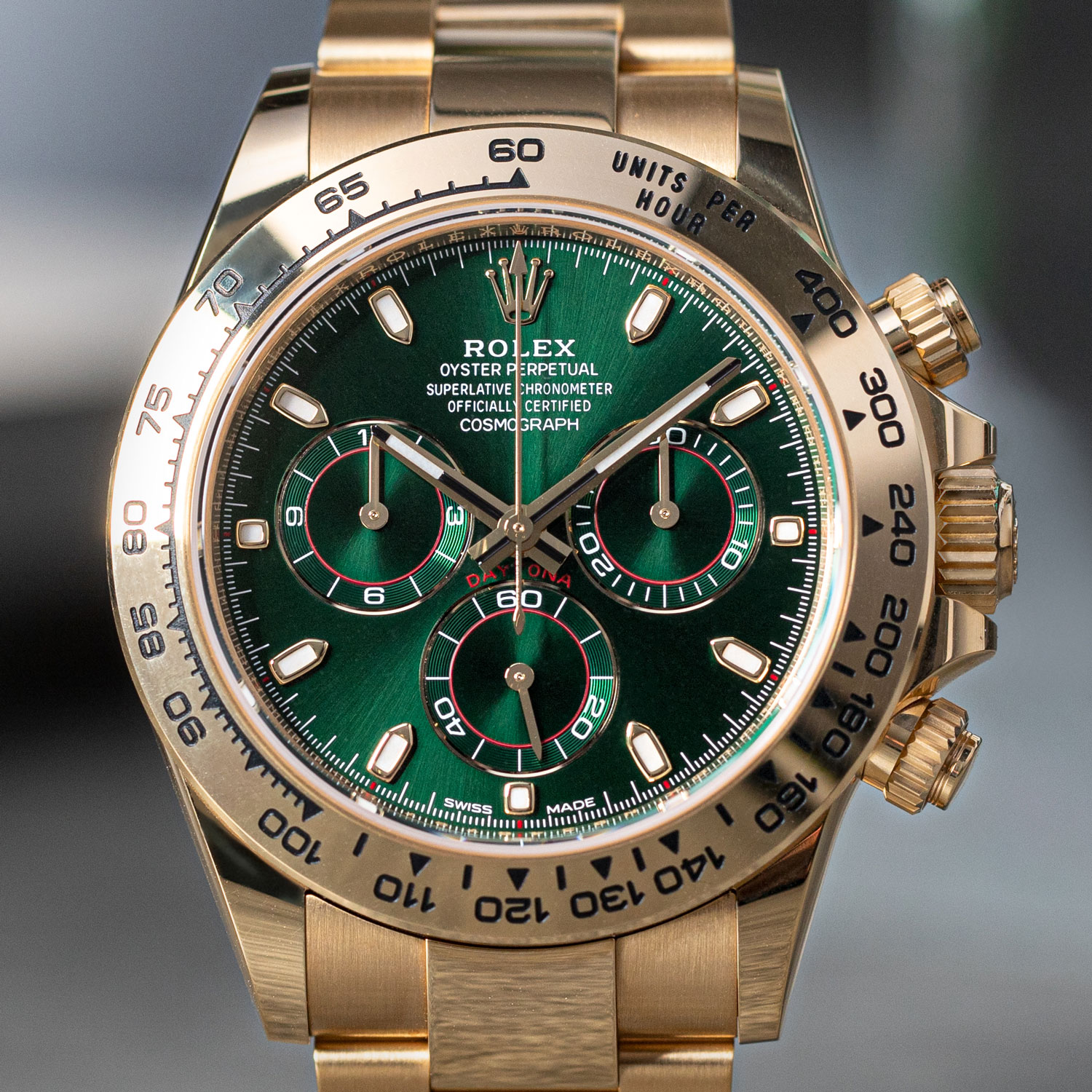
The mesmerising dial of the 116508 transitions from vivid green tones to almost black depending on light conditions. (Image: Revolution©)
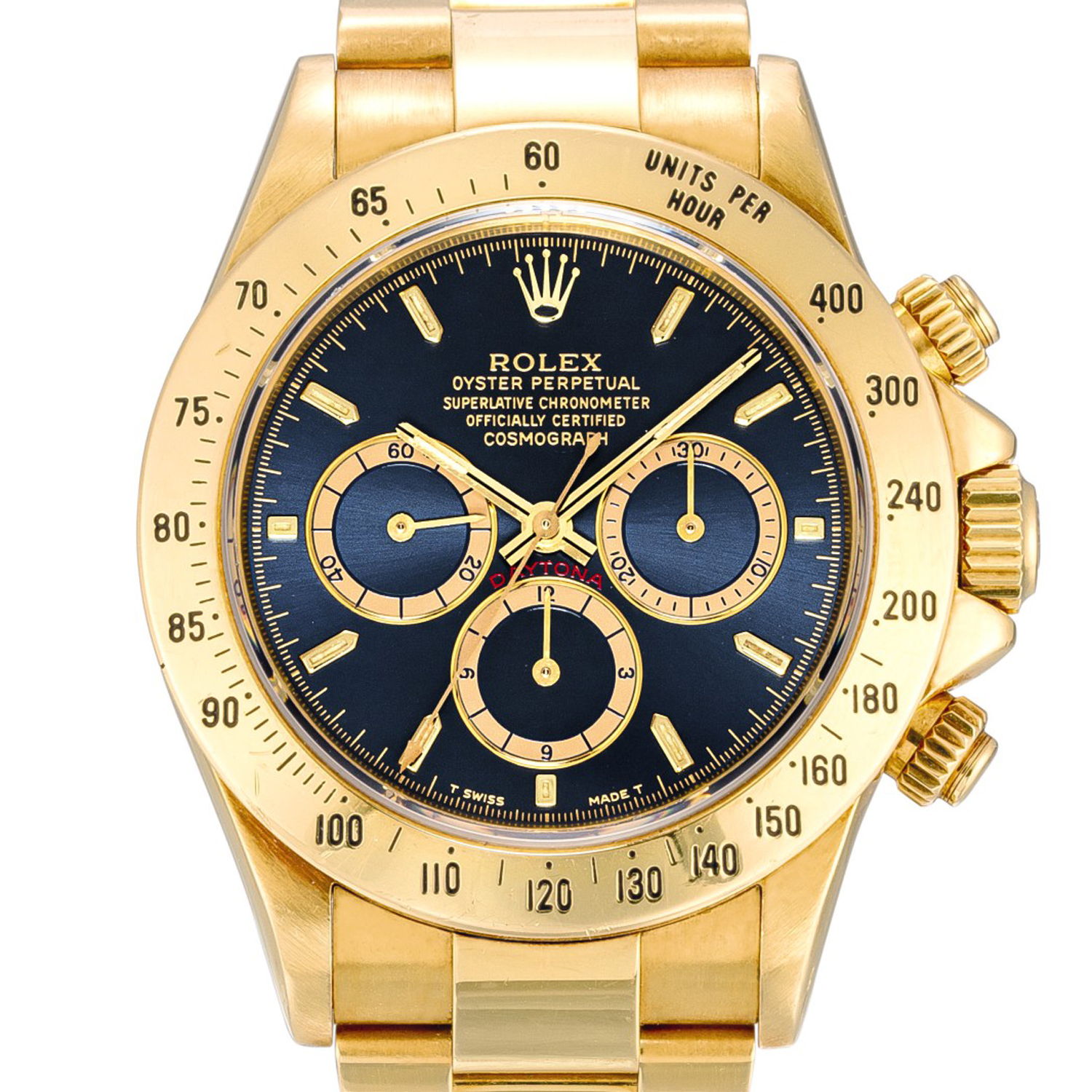
Is it blue? Or is it black? The dial of the 16528 “Chairman” plays tricks on the eye and is difficult to capture accurately in photos. (Image: Sotheby’s)
If there were only one watch
Firstly, the watch has come up more than a few times in recent auctions, including 2019 at Phillips’ Geneva Watch Auction X, where it sold for CHF 300,000. Incidentally, back in 2017, it sold for about half a million Swiss francs, also at Phillips, though this was well before the current watch craze; it would be hard to imagine a Chairman today going for anything less than well over one million dollars at auction. The second reason is that, to some extent, I think of the 116508 as a cheeky clin d’œil or nod to the Chairman. Why?, It is, of course, a yellow gold Daytona. And secondly, because its vividly contrasting emerald green dial, in the context of 2016 when it was launched, made it something of an anomaly in the world of Daytonas. Further, its sunray finish, as well as the galvanic treatment, makes the dial look almost black in artificial light but an incredibly dynamic vibrant green in sunlight, not unlike the dial of the Chairman which transitions from bright ocean blue to bear black in similar conditions. Look, for example, at this image of a Chairman from a Sotheby’s auction. Contrast it with the image beside it, and you’ll see the sort of contrast in personality, depending on the amount of light. It’s a subtle detail but one that, to me, is worth noting.
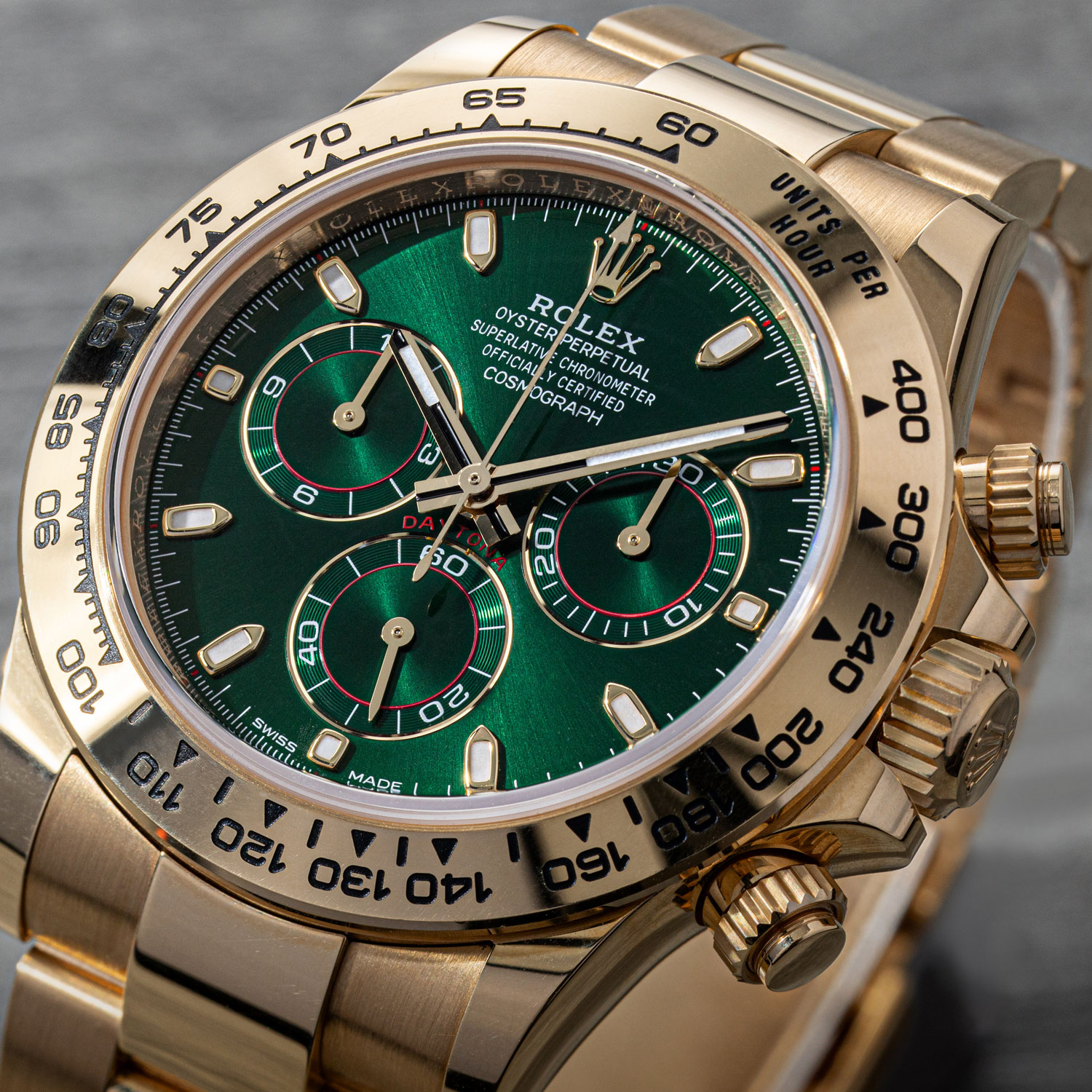
When you've finally found your grail and it has a perfect face such as this, it is like living the dream. (Image: Revolution©)
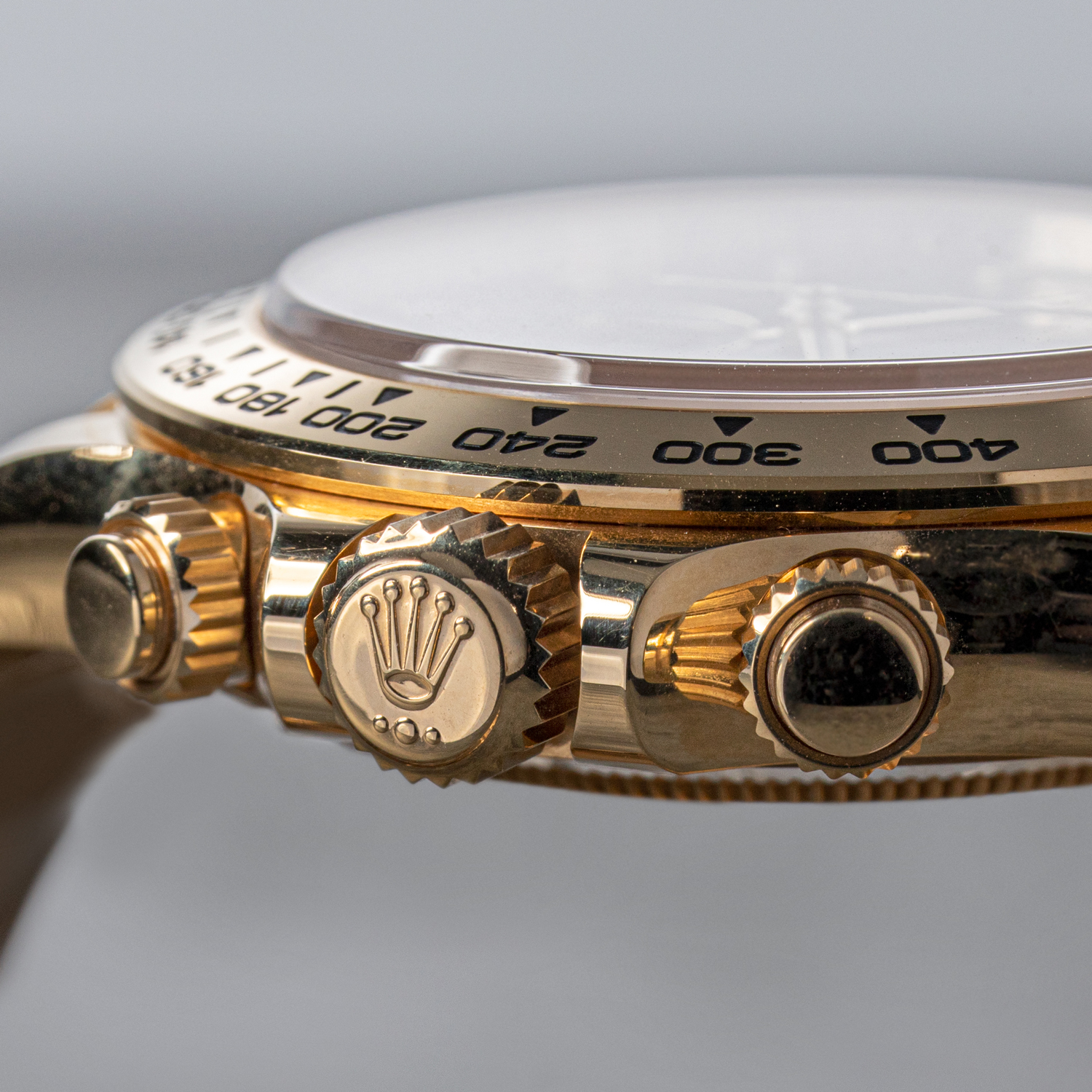
Screw-down crown and pushers make for fuss-free everyday wear. (Image: Revolution©)
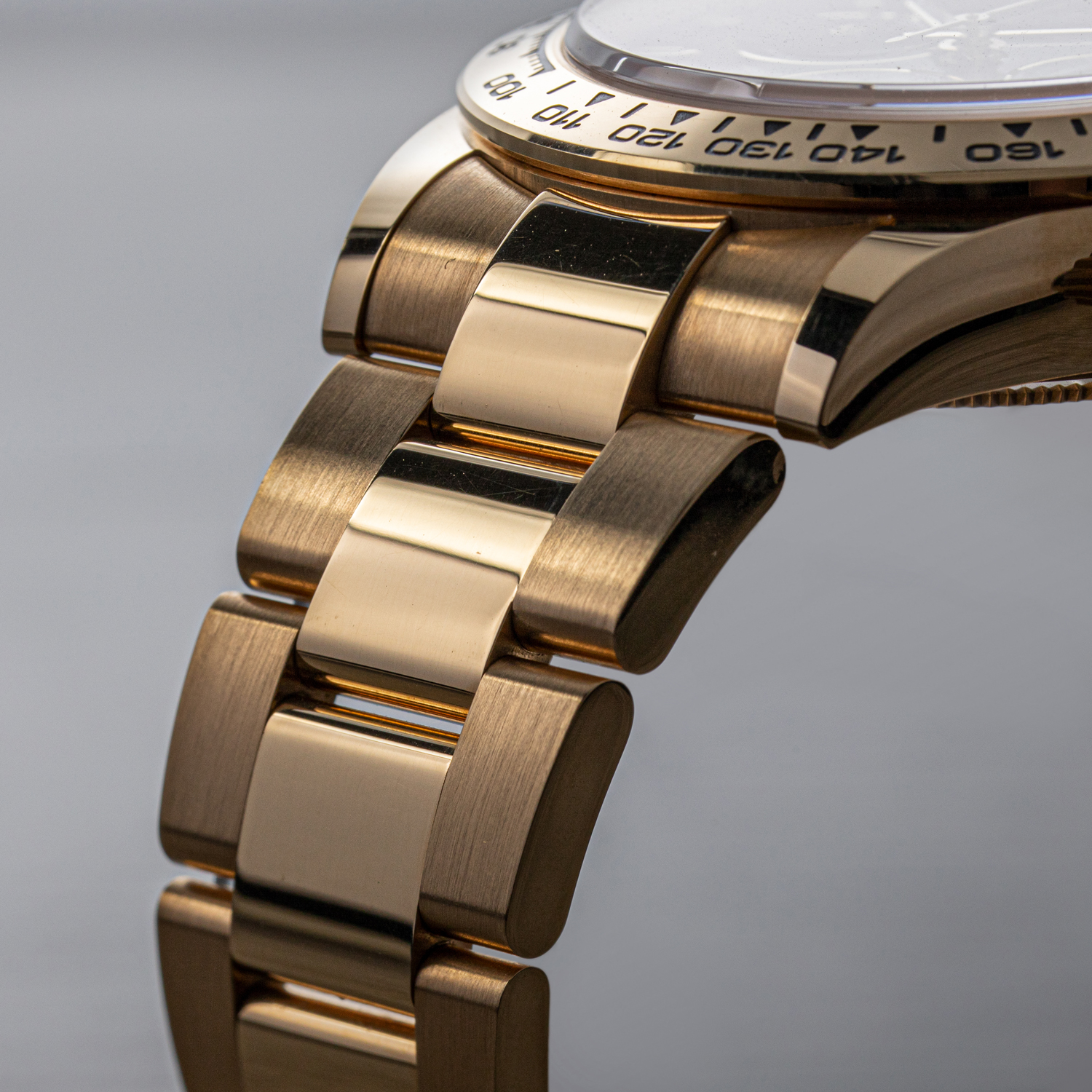
The Daytona has always been paired with a three-link Oyster bracelet but could it wear even more comfortably with a five-link Jubilee, just like the 2019 GMT-Master II 126710BLNR? (Image: Revolution©)
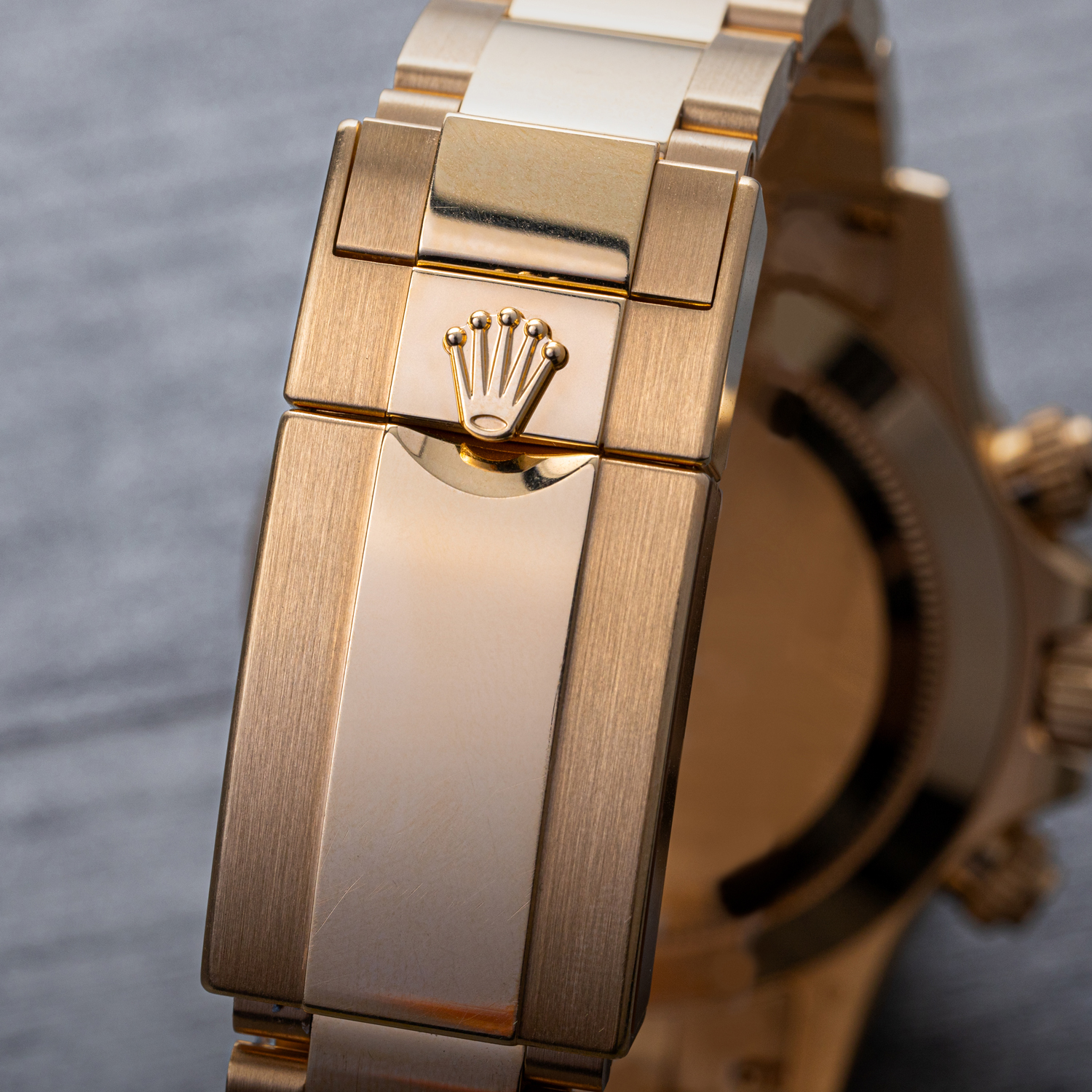
The polished center and brushed sides of the solid gold Oyster bracelet and clasp gives such a warm tone compared to stainless steel. The Fliplock device works just as well in precious metal. (Image: Revolution©)
Anyway, I’ve now had the privilege of wearing the 116508 for several months, and this is my conclusion. People often ask if a perfect watch exists — a watch that you can do anything with but that continues to give you such overwhelming happiness that your endorphin levels are set permanently on full frickin’ blast. And the answer from me is, yes. It’s this watch, and if I had to only wear one watch for the rest of my life, because of its sporting nature and total reliability combined with its transcendently ravishing beauty, it would be this watch.




